

What Is a Prompt in Writing? (Ultimate Guide + 200 Examples)
Ever stumbled upon a blank page and didn’t know where to start?
That’s where a writing prompt steps in, kicking your creativity into gear and guiding your pen (or cursor) in the right direction.
What is a prompt in writing?
A prompt in writing is a starting point designed to ignite creativity, guiding writers to explore themes, genres, or emotions. It can be a word, question, image, or scenario, aiding in overcoming writer’s block.
Keep reading to learn everything you need to know about prompts in writing.
What Is a Prompt in Writing (Long Description)?

Table of Contents
A writing prompt is essentially a starting point.
Think of it as a spark designed to ignite your creativity and guide your thoughts in a specific direction.
This little nudge can come in various forms – a word, a sentence, a question, or even a picture – and serves the purpose of inspiring you to write.
Whether you’re drafting a story, an essay, or just jotting down your thoughts, prompts help overcome the intimidation of a blank page.
It sets a predefined theme or direction for your writing.
They’re not just about what you write, but how you think and approach writing, encouraging you to explore new ideas, genres, and perspectives.
Here is a good video that explains prompts in writing:
Types of Prompts in Writing
Now let’s go over different types of prompts in writing.
Common prompt types include:
The Story Starter
The question quest, picture this, the first line frenzy.
The Story Starter is your classic nudge towards narrative creativity.
It’s a sentence or scenario meant to kick off your storytelling journey, helping you dive straight into the plot, characters, or setting.
This type of prompt is great for fiction writers looking for a jumping-off point to explore various themes or genres.
It can be as detailed or as open-ended as you like, providing just enough information to spark an idea without dictating the direction of your story.
- “When the clock struck midnight, she realized…”
- “Lost in the forest, he stumbled upon a hidden village…”
- “The last person on Earth sat alone in a room. Suddenly, there was a knock at the door…”
- “In a world where magic is real, a young apprentice discovers…”
- “The photograph in the old book revealed a secret that would change everything…”
- “Stranded on a desert island, they found a message in a bottle…”
- “On her hundredth birthday, she received a letter that took her back to her youth…”
- “The map led them to a place that wasn’t supposed to exist…”
- “In the midst of war, a forbidden love blossomed…”
- “He inherited an old mansion, not knowing the ancestors would still be around…”
The Question Quest prompt type uses intriguing questions to push your thinking boundaries and explore ideas in depth.
It’s perfect for essays, reflective writing, or exploring complex themes and issues.
These prompts challenge you to consider different perspectives, analyze situations, and develop reasoned arguments or narratives based on the question posed.
- “What would you do if you could travel back in time?”
- “How would society change if humans lived to be 300 years old?”
- “Is it possible to live a completely ethical life in today’s world?”
- “What does true bravery look like?”
- “How would the discovery of extraterrestrial life impact humanity?”
- “What is the true cost of progress?”
- “Can happiness be measured?”
- “What role does fate play in our lives?”
- “Is technology bringing us closer together or driving us apart?”
- “What would you change if you were the leader of your country for a day?”
Picture This prompts use images as the springboard for writing.
A photograph, painting, or even a random doodle can unlock a flood of creativity.
Which makes it an excellent tool for both fiction and non-fiction writers.
This visual cue encourages you to dive into descriptive writing, storytelling, or even analytical essays, exploring the emotions, stories, or ideas evoked by the image.
- A deserted street at dawn, with an old bicycle leaning against a lamppost.
- A vintage suitcase, open and filled with letters and photographs.
- A bustling market scene in a foreign country.
- A child gazing out of a rain-spattered window.
- A majestic mountain range under the stars.
- An abandoned house, its rooms still furnished but covered in dust.
- A close-up of a spider web with dewdrops.
- A lively street festival, with people dancing and musicians playing.
- An old, faded map with several places marked in red.
- A serene lake at sunset, with a lone boat tied to a wooden dock.
The First Line Frenzy is a thrilling way to dive into a story.
These prompts provide the opening sentence of your narrative, setting the tone and direction for everything that follows.
It’s a fantastic method for overcoming writer’s block and sparking your imagination, as the initial line can lead to unexpected and exciting story developments.
- “The day began with a mysterious package on my doorstep.”
- “I never believed in ghosts until I moved into the old Henderson house.”
- “The moment I heard the news, I knew my life would never be the same.”
- “Under the light of a full moon, the city revealed its true secrets.”
- “It was the kind of café you’d stumble upon once and never find again.”
- “With a deep breath, I stepped into the unknown.”
- “The letter, sealed with a wax emblem, contained a proposition I couldn’t refuse.”
- “As the train pulled away, she realized her mistake.”
- “In the heart of the ancient forest, a hidden path led to unexpected wonders.”
- “The discovery promised to rewrite history, but at what cost?”
Dialogue Driven
Dialogue Driven prompts center around a snippet of conversation, offering a dynamic entry point into your writing.
This approach is particularly effective for character development and exploring relationships through direct speech.
It can set the scene, reveal personalities, and drive the plot forward, all through the power of dialogue.
- “Did you really think I wouldn’t find out?” “I was hoping.”
- “Why is this door always locked?” “You’re not ready to know what’s behind it.”
- “Just because you can, doesn’t mean you should.” “That’s where you’re wrong.”
- “The stars look different here.” “Everything does.”
- “I wish I could stay.” “Then why are you leaving?”
- “It’s not about what I want anymore.” “Then what’s it about?”
- “I’ve never seen anything like it.” “And you never will again.”
- “Can you keep a secret?” “Depends on the secret.”
- “We’re not in Kansas anymore.” “We’re not even on the same planet.”
- “It was supposed to be a simple plan.” “Since when does anything go according to plan?”
The Sensory Dive
The Sensory Dive prompts are designed to immerse you and your reader in vivid, sensory-rich experiences.
These prompts encourage descriptive writing that appeals to the senses, painting a scene so tangible that readers feel they can touch, taste, hear, see, and smell it.
It’s a powerful tool for creating immersive worlds and experiences.
- Describe the cacophony of a bustling city market at noon.
- The taste of the first snowflake of winter.
- The scent of old books in a forgotten library.
- The feeling of sand between your toes as waves crash on the shore.
- The sight of a landscape transformed by autumn’s touch.
- The sound of a distant thunderstorm approaching.
- The warmth of a crackling fire on a cold night.
- The chill of walking through a foggy graveyard at dusk.
- The texture of an ancient, carved stone.
- The silence of a snow-covered forest.
The What-If Wonder
The What-If Wonder prompts take you on a journey of imagination, exploring alternate realities and scenarios.
These prompts ask you to consider how different choices, events, or conditions might alter the world, characters, or story.
It’s an excellent way to delve into speculative fiction, science fiction, and fantasy, pushing the boundaries of reality.
- What if humans had the ability to communicate telepathically?
- What if gravity suddenly became a variable force on Earth?
- What if you woke up 100 years in the past with your current memories intact?
- What if plants were the dominant intelligent species on the planet?
- What if you could see the future but only 24 hours ahead?
- What if water was as rare as gold?
- What if everyone had their lifespan displayed above their heads?
- What if you found a door that could take you to parallel universes?
- What if animals could petition for their rights?
- What if dreams were actually glimpses into alternate realities?
The Emotional Rollercoaster
The Emotional Rollercoaster prompt is all about exploring the depths of human emotion, challenging you to convey complex feelings and reactions.
These prompts are perfect for delving into character development, interpersonal relationships, and personal reflection.
By focusing on the emotional landscape, writers can create compelling narratives that resonate with readers on a deeply personal level.
- The moment you realized you were in love.
- Feeling utterly lost in a place you once called home.
- The bitter sweetness of a farewell.
- Overcoming a fear that once held you back.
- The complex emotions of reuniting with someone after many years.
- The guilt of a lie that spiraled out of control.
- The rush of achieving something you thought was impossible.
- The profound sadness of losing a cherished memory to time.
- The unexpected joy found in a simple act of kindness.
- The peace of accepting things you cannot change.
The Genre Blender
The Genre Blender prompts encourage you to mix elements from different genres, creating unique and innovative narratives.
These prompts are excellent for writers looking to break the mold and experiment with their storytelling.
Whether it’s combining science fiction with historical fiction or fantasy with mystery, the possibilities are endless.
- A detective in a dystopian future solving a crime that could change the course of history.
- A romance blossoming in the midst of a zombie apocalypse.
- A fantasy world where magic is dying, and technology is on the rise.
- A historical drama set in ancient Rome, but with a twist of time travel.
- A horror story set in space, aboard a ship with a mysterious alien artifact.
- A western where the frontier towns are protected by wizards instead of gunslingers.
- A cyberpunk thriller featuring a heist in a virtual reality world.
- A mystery set in a magical school where the students must uncover a dark secret.
- A superhero story grounded in the real-world challenges of modern society.
- An adventure tale that blends deep-sea exploration with ancient mythology.
The Time Traveler’s Gateway
The Time Traveler’s Gateway prompts explore the intricacies of time travel, its implications, and its paradoxes.
This type of prompt is perfect for science fiction and speculative fiction writers, offering a playground for the imagination that challenges our understanding of time, history, and causality.
- Discovering a time machine in your backyard and deciding where to go first.
- A message from the future warning of an impending disaster.
- The consequences of changing a small event in the past.
- A society where time travel is common, but strictly regulated.
- An ancient civilization that had advanced time travel technology.
- Meeting your ancestors and learning their secrets.
- The ethical dilemmas of using time travel for personal gain.
- A love story that transcends time barriers.
- The discovery that history is a construct, shaped by time travelers.
- A time loop where the protagonist must solve a puzzle to escape.
The World Builder’s Dream
The World Builder’s Dream prompts invite you to create entire worlds from scratch.
This type of prompt is a boon for fantasy and science fiction writers, offering the freedom to craft unique settings, cultures, laws of nature, and societies.
It’s an opportunity to let your imagination run wild and establish the groundwork for epic tales.
- A planet where the seasons last for decades.
- A city built entirely on the back of a giant, wandering creature.
- A society where people’s roles are determined by their innate magical abilities.
- An underwater civilization that has never seen the surface.
- A world where dreams can be entered and manipulated.
- A floating island nation that travels the skies.
- A dystopian future where memories can be bought and sold.
- A kingdom where music is the source of all magic.
- A realm where the night lasts half the year.
- An alternate Earth where the continents never split apart.
The Unseen Perspective
The Unseen Perspective prompts challenge you to write from the viewpoint of non-human characters or entities.
This approach forces you to step outside the human experience and consider the world from a completely different angle.
It’s a fantastic way to explore themes of consciousness, nature, and the interconnectedness of life.
- The life of a tree over centuries, witnessing the changes in the world.
- A day in the life of a household pet during a major family event.
- The thoughts of a spaceship AI as it travels through the cosmos.
- The experiences of a ghost haunting an old mansion.
- A story told from the perspective of a river, from source to sea.
- The journey of a single leaf from sprout to falling to the ground.
- The collective consciousness of a hive of bees facing environmental challenges.
- The ancient spirit of a mountain overseeing its surroundings.
- The adventures of a book as it passes from reader to reader, experiencing different interpretations and emotions.
- The perspective of a city as it grows and evolves over centuries, through peace and conflict.
The Emotional Journey
The Emotional Journey prompts focus on the internal growth and transformation of characters.
It invites writers to delve into personal development, self-discovery, and the overcoming of obstacles.
This type of prompt is ideal for character-driven narratives, where the emphasis is on emotional depth and the evolution of the protagonist’s inner self.
- A character grappling with the loss of a loved one and finding a way to move forward.
- The journey of self-acceptance for someone who feels out of place in their world.
- A hero facing their darkest fears in order to save what they cherish most.
- A villain’s realization of the impact of their actions and their quest for redemption.
- A young adult’s transition into independence and the challenges they face along the way.
- The transformation of a skeptic into a believer through a series of unexplainable events.
- The struggle of a character to forgive themselves and others for past mistakes.
- The process of rebuilding one’s life after a catastrophic event.
- A character’s journey from indifference to passionate advocacy for a cause.
- The evolving relationship between two characters who start as rivals and become allies.
The Moral Dilemma
The Moral Dilemma prompts put characters in situations where they must make difficult choices, often between two equally undesirable options.
These prompts are great for exploring ethical questions, character morality, and the complexity of human nature.
They challenge writers to think deeply about what it means to make a “right” decision.
- Choosing between saving a loved one or a group of strangers from danger.
- Deciding whether to expose a painful truth that could destroy a friend’s happiness.
- The choice of upholding the law or doing what is morally right in a corrupt society.
- A character must decide whether to seek revenge or forgive an unforgivable act.
- The dilemma of sacrificing personal dreams for the greater good.
- Deciding whether to keep a secret that protects one person but harms others.
- A leader’s choice between peace at the cost of justice or war for the sake of freedom.
- The ethical implications of using advanced technology to alter human nature.
- A scientist faces a moral conflict over a discovery that could change the world but has dangerous implications.
- The struggle of a character who finds out that their entire life is based on a lie and must choose how to react.
The Creative Challenge
The Creative Challenge prompts are designed to push the boundaries of conventional storytelling.
It encourages experimentation with narrative structure, style, and content.
These prompts invite writers to play with unconventional formats, such as a story told in reverse, a narrative composed entirely of dialogue, or a tale that weaves multiple perspectives into a cohesive whole.
- A story told through a series of diary entries, each revealing a piece of the puzzle.
- A narrative structured as a series of text messages between characters.
- A tale that begins with its conclusion and works backward to the start.
- A story where each chapter is from the perspective of a different character, all revolving around a single event.
- A narrative composed entirely of letters sent between two characters.
- A story told through the lens of an inanimate object witnessing events unfold.
- A tale that intertwines the past and present, revealing how they mirror and affect each other.
- A narrative that challenges the concept of linear time, mixing moments from various points in the characters’ lives.
- A story where the setting changes in each chapter, influencing the plot and characters in unique ways.
- A narrative that plays with genre conventions, blending elements from different genres in unexpected ways.
Final Thoughts: What Is a Prompt in Writing?
I hope this guide “prompts” you to understanding, creativity, and motivation to write.
Check out some of our other great guides below.
Read This Next:
- What Is A Personal Account In Writing? (47 Examples)
- 150+ Christmas Story Ideas, Tips & Prompts (Fun & Festive)
- 620 Best ChatGPT Prompts for Writing a Nonfiction Book
- 650+ Best Prompts for ChatGPT (Ultimate List for 2024)
- 346 Fluff Prompts (Easy & Unique)
Writing Prompt (Composition)
Glossary of Grammatical and Rhetorical Terms
- An Introduction to Punctuation
- Ph.D., Rhetoric and English, University of Georgia
- M.A., Modern English and American Literature, University of Leicester
- B.A., English, State University of New York
A writing prompt is a brief passage of text (or sometimes an image) that provides a potential topic idea or starting point for an original essay , report , journal entry , story, poem, or other forms of writing. Writing prompts are commonly used in the essay portions of standardized tests, but they may also be devised by the writers themselves.
A writing prompt, according to Garth Sundem and Kristi Pikiewicz, usually has "two basic components: the prompt itself and directions explaining what the students should do with it." ( Writing in the Content Areas , 2006)
Examples and Observations
"Today is Kiss and Make Up Day, a day to fix relationships that need mending. " Prompt . Have you ever been in an argument with a friend or a member of your family? What was the disagreement over? How did you resolve it?" (Jacqueline Sweeney, Prompt a Day!: 360 Thought-Provoking Writing Prompts Keyed to Every Day of the School Year . Scholastic, 1998)
Elicting Insightful Responses
"Responses to writing prompts are typically more insightful than if a teacher allows students to simply write for a certain amount of time without specifying a topic." (Jacalyn Lund and Deborah Tannehill, Standards-Based Physical Education Curriculum Development , 2nd ed. Jones and Bartlett, 2010)
Touching on Experiences
"Two characteristics of engaging . . . writing prompts are that they touch on experiences accessible to the students, and they allow for multiple ways to write an answer." (Stephen P. Balfour, "Teaching Writing and Assessment Skills." Improving Writing and Thinking Through Assessment , ed. by Teresa L. Flateby. IAP. 2011)
Writing Prompt for 'An Initiation'
"For the first assignment in the course, I'd like you to write a personal narrative that tells us something about who you are or what your interests are. The audience for this paper is the instructor and the class and the purpose is to introduce yourself to us in a way that will help all of us get to know each other. Be sure to include specific details that show rather than tell. Consult your class notes about writing successful narratives. Your narrative should be two to four pages long." (Julie Neff-Lippman in Concepts in Composition: Theory and Practice in the Teaching of Writing , 2nd ed., by Irene L. Clark. Routledge, 2012)
Understanding Writing Prompts
"To help build students' skill in reading and understanding a prompt, you should spend a class period analyzing two prompts by discussing the kinds of questions students need to ask themselves as they plan a writing response. . . . 1. What form of writing is the prompt asking for? 2. What ideas or arguments will the reader expect you to suggest? Would these points be good paragraph topics? 3. What does the prompt expect you to do? 4. Who is the audience for this essay? 5. Write a quick one-sentence answer to each question asked in the prompt. Use these answers to develop your outline and thesis ." (Sydell Rabin, Helping Students Write to a Prompt . Scholastic, 2002)
Responding to Writing Prompts on the SAT
"Topics for writing prompts tend to be broad, open-ended, and adaptable enough for any test-taker to find something to write about. Remember that you will not need any specific subject matter knowledge to answer the question. The excerpt in this sample is a typical example: The role of advertising is to induce people to buy goods and services. Advertising is neither moral nor immoral. It is ethically neutral. The writing prompt will most likely be based on a statement or a quotation . In order to answer the question that follows, you must understand what the excerpt is about. However, if you can't figure out the meaning or aren't sure, don't worry. The test-writers tell you the issue in the assignment. "However, don't ignore the excerpt. You may find some phrases that you can use in your essay. Referring back to the excerpt by paraphrasing it or using some words from it can be an effective technique." (Margaret Moran, Master Writing for the SAT: What You Need for Test Success . Peterson's, 2008)
Expository and Persuasive Writing Prompts
"An expository prompt asks you to define, explain, or tell how to do something. The following is an example of an expository writing prompt. Most people have a favorite season or time of year. Write an essay describing your favorite season. Discuss what makes that season special to you. "A persuasive prompt asks you to convince the reader to accept your opinion or to take a specific action. The following is an example of a persuasive writing prompt. To cut back on expenses, your principal has asked the school board for permission to cancel all field trips for the remainder of the year. Some people think this is a good idea because they consider a field trip a 'vacation' from learning and therefore an unnecessary expense. Write to the school board explaining your position on the issue. Use facts and examples to develop your argument. " (J. Brice and Dana Passananti, OGT Ohio Graduation Test: Reading and Writing . Research & Education Association, 2007)
Photographs as Writing Prompts
"Keep in mind that students from diverse cultures may respond differently or not relate at all to some photos, especially when the photos are of unfamiliar objects, places, or people. As you select photographs to share as prompts for this activity, make sure you introduce them to your students and allow students to ask questions they might have about them. If you find that some students are so puzzled by a photograph that using it as a writing prompt would be counterproductive, then select an alternative photo for students to describe." (David Campos and Kathleen Fad, Tools for Teaching Writing: Strategies and Interventions for Diverse Learners in Grades 3-8 . ASCD, 2014)
Sources of Writing Prompts
"On occasions I invite participants in my [writing] group to open the dictionary to a word, any word, and offer it to the next person as her prompt, and so on, around the room with each writer receiving a different word to write from. And I never read anything without a notebook by my side or sticky notes within reach. You never know when the perfect prompt will appear. . . . "The real world can also be a source for writing prompts. I jot down phrases I hear during the day (a writer always eavesdrops), or something I've seen scrawled on a building ('This Is the Last Time'), or notes from a menu at lunch (juice from the ripest berries). . . . Even directions on a cereal box have served as a writing prompt for my drop-in group ('Slide finger under the flap and loosen gently'). Faulkner said there's a bit of the scavenger in every writer. This is what we do when we're collecting inspiration." (Judy Reeves, Writing Alone, Writing Together: A Guide for Writers and Writing Groups . New World Library, 2002)
- UC Personal Statement Prompt #1
- The 2021-22 Common Application Essay Prompts
- Common Supplemental Essay Mistakes
- How to Ace Your University of Wisconsin Personal Statements
- Expository Essay Genre With Suggested Prompts
- The Importance of Answering Questions in Complete Sentences
- Private School Application Essay Tips
- How to Write a Persuasive Essay
- Sample Weak Supplemental Essay for Duke University
- Instructional Words Used on Tests
- 2020-21 Common Application Essay Option 4—Solving a Problem
- How To Write a Top-Scoring ACT Essay for the Enhanced Writing Test
- Writing Prompts for Elementary School Students
- Short Answer Mistakes
- June Themes, Holiday Activities, and Events for Elementary Students
- 7 Law School Personal Statement Topic Ideas
What Is a Writing Prompt and What Types There Are?
June 2, 2022
What Is An Essay Prompt?
Understanding writing prompts, types of writing prompts, how to write a prompt, how to respond to essay writing prompts for beginners, key takeaways.
Do you love writing but sometimes feel stuck or uninspired? Are you looking for a way to jumpstart your creative process ? If so, writing prompts may be just what you need. But what is a writing prompt and what is its role in writing?
In this article, we will discuss the definition of a writing prompt, explore different types of prompts, and learn how to write one yourself.
What Is a Writing Prompt?
A writing prompt is a sentence, paragraph, or (rarer) an image that provides inspiration and guidance for creative writing . It may be used as a possible topic or starting point for an original essay, report, journal entry, story, poem, etc. A writing prompt’s main aim is to test a writer’s analytical capabilities, writing skills, and ability to express their point of view.
Writing prompts for students have long been used in the classroom to encourage student attention and develop their capacity to focus on a certain subject, idea, or concept. They also give students the chance to express their own opinions on a certain topic. Prompts stimulate students’ critical thinking and offer them an opportunity to construct a well-reasoned, structured argument in response to another writer’s viewpoint.
An essay prompt is a subtype of the writing prompt. Essay prompts are generally made up of 1 to 3 sentences that provide some context about the subject, followed by a question that asks students to write about a certain topic in the form of an essay .
The goal is to get students to respond with an essay focusing on a statement or issue in order to assess their writing, reasoning, and analytical abilities.
Analyzing your writing prompt is easier if you highlight the important words while reading it . Here are some of the words you should watch out for:
- Argue – requires you to present facts that support your opinion
- Compare – determine the similarities and differences between two or more concepts
- Define – provide a definition of a specific concept or subject
- Discuss – explain various aspects of a subject or problem and reach a conclusion
- Describe – give a detailed description of an event or a particular person, place, or thing
Prompts can help improve your writing skills by providing practice in brainstorming, planning, drafting, revising, and editing . Daily writing prompts can also help you practice and develop your understanding of grammar when learning a new language .
Following are the most common types of writing prompts that students come across as a part of their degrees or continuing education programs:
Descriptive
Descriptive prompts frequently include cue terms such as “describe in detail,” “describe how something looked/felt/smelled/tasted,” and so on. In this type of writing, the reader should be able to experience what you’re writing about. Descriptive writing exercises frequently request writers to provide details that will help the reader construct a vivid picture by including sensory elements , such as sight, sound, smell, touch, and taste.
Expository/Informative
Expository writing prompts are a good writing practice for teens and college students. Expository prompts typically ask the writer to describe, compare and contrast, discuss pros and cons, or define something .
Expository writing has a particular purpose and audience in mind; as a result, the style and voice must correspond to the set subject and audience. The following words are used as cues to elicit expository answers: why, how, what, and explain.
The act of writing a narrative is the process of recording and telling events from one’s personal or fictional experience . Identifying what a narrative writing prompt look like is easy when you know what to look for. These prompts call for insight, creativity, drama, suspense, humor, and/or fantasy, and often contain the term “tell about…,” “write a story,” or “describe”.
Writers should use real or invented experiences when responding to narrative prompts. They should also incorporate dialogue, sensory elements, and sensible sequences into their response.
In this sort of prompt, the writers are expected to express their viewpoint on a certain subject, followed by logical reasoning and facts . This can either be a controversial issue or something light-hearted and fun. No matter what the topic is, if you’re wondering how to start a writing prompt like this, just make sure you’re clear and concise so that the reader knows exactly what is being discussed.
Persuasive prompts are writing prompts that require the writer to convince or persuade the reader to agree with a certain point of view . These types of prompts typically use cue words such as “convince,” “persuade,” and “why” rather than “how.”
To write a persuasive prompt, it is important to first brainstorm ideas and then narrow down your focus to come up with a creative and unique prompt. Remember to consider your audience when writing persuasive prompts.
The research approach to daily writing prompts encourages writers to look for information on a given topic using books, internet resources, films, etc . Such a writing assignment asks students to look up all the details and provide the resources as well, sometimes in the form of a bibliography .
When you start writing, no matter the type and form of the written piece, it’s important to consider your audience and purpose. When you’re responding to a written prompt that lists children as your target audience, for example, you’ll need to use age-appropriate language and focus on the topics that are interesting for the particular age group . Apart from the audience, you need to pay attention to the following factors, as well:
Prompt Construction
Breaking down the writing prompt into three parts is another useful approach for better conveying the task’s meaning:
- the first part introduces the subject
- the second part encourages writers to think about it, perhaps with a brainstorming pre-writing exercise
- the third portion explains what needs to be written
In order to avoid confusion, writing prompts should be brief and focused . The instructor must make sure that the students are provided with sufficient information in order for them to understand the writing assignment completely.
The components of the prompt can be repeated, but using parallel wording will help writers stay focused on the specific writing task.
Bias and Sensitivity
The topics of your creative writing prompts should be inclusive and fair to all potential writers . The prompts should be written in a way that allows writers to easily comprehend them, regardless of their cultural background or other variables. It’s important to avoid cultural, ethnic, gender, or any other form of bias when developing prompts.
After you’ve examined your prompt, it’s time to get creative and prepare for your essay writing:
- First, make a thesis statement to address the main issue . Your thesis statement should be the focal point of your whole essay and should reflect your stance on the issue.
- When responding to writing prompts for beginners, write simple topic sentences that cover all the criteria. Add any facts, elaborations, or evidence you need to back up your viewpoint.
- After you’ve finished, you may add more facts and smooth transitions between each phrase and paragraph . Make sure to include an eye-catching opening line in your first paragraph, as well as a conclusion that summarizes your ideas and thesis statement.
All in all, understanding what is a prompt in writing and how to respond to one is a key skill for all writers. By taking the time to analyze the prompt and brainstorm ideas, you’ll make sure that your written piece is clear, concise, and on-topic. Practicing with different types of prompts will help you hone your skills and become a more confident writer.
The three parts of a writing prompt are the introduction, the body, and the conclusion. The introduction sets the tone for the rest of the piece, the body provides support for the thesis, and the conclusion ties everything together and leaves readers with a final thought or impression.
Most writing prompts consist of the following six parts: articulation of purpose, a summary of the assignment, logistics, paper’s key components, framing questions, and evaluation criteria.
What is a writing prompt supposed to be like in order to both challenge a writer and let them showcase their writing skills? It must be clear and concise, and possible to answer in a short amount of time. It should also be open-ended enough to allow for creative interpretation, not requiring prior knowledge in order to be answered.
- Open Library
ABOUT AUTHOR
by Beti Prosheva Gavrilovska
I am curiosity-driven and detail-oriented so you will often find me researching the latest trends, experimenting with search engine optimization, or testing software. As a keen observer of content, my teammates often like to joke that "noting escapes the eye of Beti."
Latest from Beti
Related posts.

Top 10 Companies in the Capital Goods Field

Top 20 Companies That Hire Felons in 2024

How Long Does the HireRight Background Check Take?

Second Chance Jobs for Felons: 10 Best Choices!

Does a VPN Work With Spotify? When Do You Need One?

VPN Not Working With Omegle? Try These 5 Easy Solutions!
![writing prompt define How to Find Someone’s Tinder Profile? [2024 Expert Guide]](https://review42.com/wp-content/uploads/2023/06/Finding-Someone-on-Tinder.jpg)
How to Find Someone’s Tinder Profile? [2024 Expert Guide]
7 Clash of Clans Alternative Games

Which US Banks Offer 5% Savings Accounts?

Candy Crush Saga Alternatives
Leave a Reply Cancel reply
You must be logged in to post a comment.

Embarking on a Creative Journey: Writing Prompts 101 with Examples

Fellow wordsmiths, if you find yourself, much like me, in a stare-down with a blank page, yearning for that enchanting inspiration to make its grand entrance, worry not! I’m here to acquaint you with the enchanting universe of writing prompts. Think of this as your very own handbook, designed to spark your creativity, vanquish that pesky writer’s block, and set you on a captivating expedition of self-expression.
Unraveling the Magic of Writing Prompts:
What are writing prompts.

Writing prompts are the creative nudge we all need – the spark that turns the mundane into the extraordinary. They’re like the secret handshake between you and your imagination, unlocking a gateway to uncharted storytelling realms. These bite-sized ideas, questions, or scenarios serve as the groundwork for your literary adventures, propelling you into endless possibilities.
Why Use Writing Prompts?
Let’s face it; the blank page can be intimidating. Writing prompts are the antidote to the dreaded writer’s block. They coax your muse out of hiding, inviting her to dance across the page. Whether you’re a seasoned writer or just dipping your toes into the vast ocean of words, prompts provide a springboard for creativity, helping you explore new genres, perspectives, and voices.
Navigating the Landscape of Writing Prompts:
Types of writing prompts:, 1. open-ended prompts.
These are the trailblazers of creativity. They present a scenario without a defined resolution, encouraging you to chart your course. For example: “In a world where time travel is possible, you stumble upon a letter from your future self. What does it say?”
2. Visual Prompts
A picture is worth a thousand words, right? Visual prompts , like a captivating image or artwork, beckon you to weave a story around what you see. Imagine a deserted street at twilight – what secrets lie in the shadows?
3. Dialogue Prompts

Sometimes, a single line can unravel a multitude of stories. Consider this: “The last thing I expected to find behind the old bookstore was…”
4. Theme-Based Prompts
Themes add a layer of depth to your writing. Explore themes like resilience, loss, or discovery. An example: “Write about a character who finds solace in an unexpected place during a storm.”
5. Crafting Your Prompts
Don’t shy away from creating your prompts. Tailoring them to your interests or current projects can be incredibly rewarding. For instance, if you’re working on a mystery novel, your prompt could be: “A detective discovers a cryptic message written in an ancient language at the crime scene.”
Also Read: How to Keep Students Writing in the Age of AI Tools?
The Power of Examples:
1. open-ended prompt.

Ever wondered what it’s like to live in a world where dreams come to life? Describe a day in the life of someone in this extraordinary reality
In a world where dreams materialize with the rising sun, I woke up to find a vibrant garden of floating lanterns outside my window. Each lantern embodied a dream, gently floating in the morning breeze. My heart raced with the possibilities as I stepped into this dreamscape, where laughter and whispered secrets danced in the air…
2. Visual Prompt
Study the image of an abandoned amusement park below. Craft a story around what led to its demise and the secrets it holds.

The Ferris wheel creaked eerily in the stillness, a testament to the laughter that once echoed through the air. As I ventured through the desolate amusement park, a faded sign caught my eye: “Closed for eternity, but the memories linger.” I couldn’t resist the pull to uncover the tales of joy and sorrow that lingered in the rusting rides and overgrown pathways…
3. Dialogue Prompt
Use the following line as the starting point for your story: “I never thought I’d see you again after all these years.”
I never thought I’d see you again after all these years. The words hung in the air, laden with the weight of forgotten promises and untold stories. As we stood face to face, the years melted away, and the echoes of our shared past reverberated in the spaces between us…
4. Theme-Based Prompt
Explore the theme of resilience by writing about a character who faces a seemingly impossible challenge and discovers their inner strength.
Amid the ruins of shattered dreams, she stood, resilient as a solitary flower pushing through the cracks in the pavement. The world had dealt its harshest hand, but with each adversity, she discovered a hidden reservoir of strength within herself. In the face of despair, she became a testament to the indomitable spirit that could rise, unbroken, from the ashes…
The Road Ahead: Embrace the Journey
Embrace the company of writing prompts on your expedition of self-discovery and creative exploration. Rather than rigid rules, consider them as inviting pathways to venture into. Plunge into the prompts that strike a chord with your soul, fashion your narratives, and witness the spectacle as your imagination takes flight. These prompts are more than mere tools; they wield the enchantment of magic spells, transforming the blank page into a canvas awaiting the strokes of your unique stories. So, let the words flow, fellow storytellers, and revel in the joyous act of writing!
Most Popular Stories

A Comprehensive Analysis by an Education Policy Analyst
Education plays a crucial role in personal and societal development. As our societies evolve and face new challenges, education policies
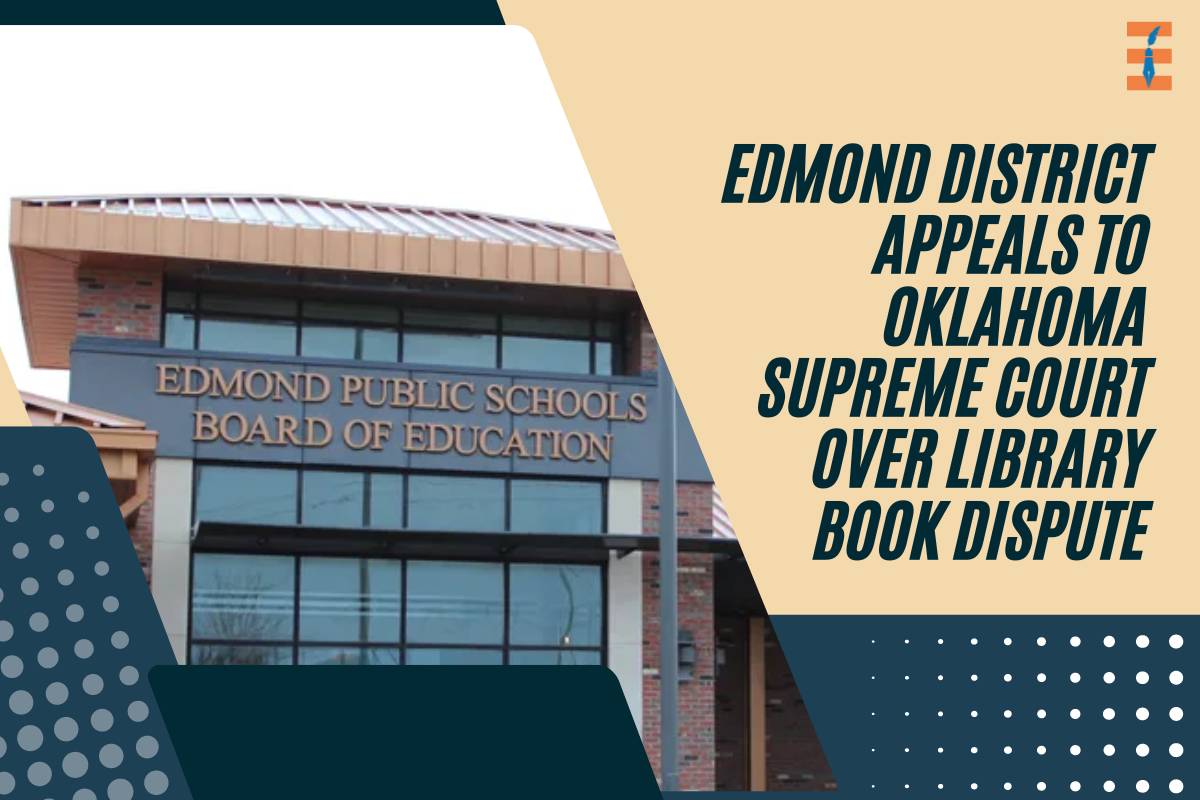
Edmond District Appeals to Oklahoma Supreme Court Over Library Book Dispute
Source - Oklahoma Council of Public Affairs Edmond District Public Schools has taken its battle against the Oklahoma State Board

The Controversy Surrounding Bilingual Education: A Path to Failure for Migrant Kids?
Source - New York Post In response to the increasing enrollment of migrant children in schools across major cities like

Women Scientists: Eight Remarkable Figures Who Made History
Throughout history, women have played a crucial role in advancing scientific knowledge despite facing numerous obstacles. From Marie Curie's groundbreaking
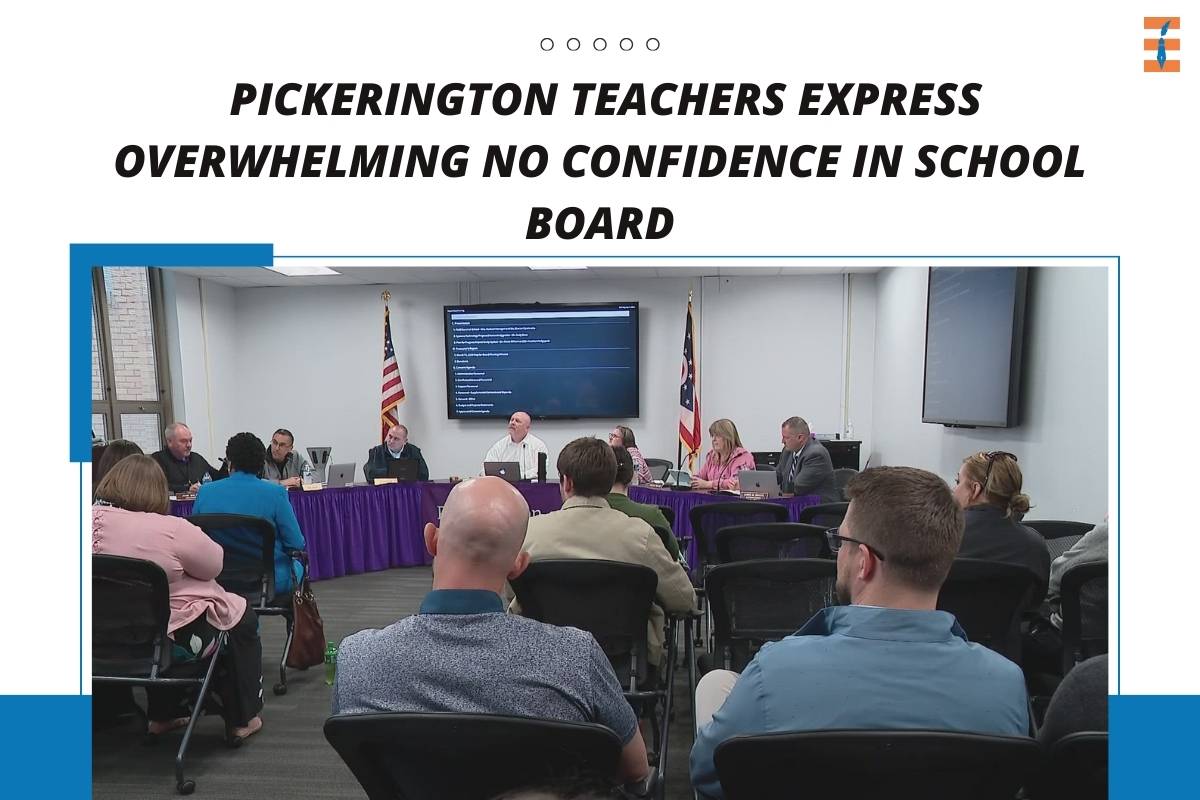
Pickerington Teachers Express Overwhelming No Confidence in School Board
Source - 10TV In a resounding statement of disapproval, teachers at Pickerington Local School District have voted nearly unanimously in

Biden’s Education Budget Reflects Failure to Address Pandemic Learning Loss
Source - Education Week President Biden’s proposed federal K-12 budget for the 2025 fiscal year signals a tacit admission of

International Education Evaluations in a Globalized World
The importance of international education evaluations in our ever-changing world cannot be overstated. These evaluations serve as a valuable tool

USC Professor Minuette Floyd Honored with Governor’s Award for Arts in Education
Source- University of South Carolina A University of South Carolina (USC) professor, Minuette Floyd, has been recognized with the prestigious
Join Our Newsletter!
Get the latest education updates delivered to your inbox.

Future Education Magazine is an exceptional source of knowledge and resources for those looking to choose the right path in education. Whether you are a student, parent, educator, or education enthusiast, our magazine is committed to providing you with insightful and valuable content.
- Higher Education
- Professional Courses
- Privacy Policy
- Terms & Conditions
- [email protected]
- +1 (408) 520-9503
- 3277 S White Rd #41 San Jose, CA 95148, United States
Copyright © 2024: Future Education Magazine | All rights reserved.

Want to create or adapt books like this? Learn more about how Pressbooks supports open publishing practices.
Putting the Pieces Together: What Are Writing Prompts?
What are writing prompts.

Why Are Prompts Used in WRIT?
Learning to write well takes time and practice. Becoming a better writer, whether for academic or professional purposes, can only begin if you actively engage with other writers, and, most importantly, other viewpoints. Responding to another writer involves not only understanding the argument or position that they make, but also determining whether you agree, disagree, or partially agree with their position. Your goal as a developing writer, then, is to articulate your view clearly and concisely on an issue, to support it with solid reasons, and to respond to potential arguments other readers may raise about your own argument.
How Are Prompts Used in WRIT?
In WRIT, weekly prompts are used to allow students to demonstrate their understanding of the writing process. Through guided writing practice, your instructor will use timely and topical writing scenarios so that you can apply the various aspects of writing competency in an incremental way each week. Sure, writing weekly can seem daunting for some or repetitive for others. Yet, it is important to remember that learning any new skill involves a level of repetition.
Learning to write is an iterative process, which means you will get better the more often you write. You know what they say: practice makes perfect – and this is especially true when learning to write. Using prompts regularly as part of our writing curriculum can boost the chances that you will not only improve as a writer but also feel connected to the writing process itself.
Understanding Writing Prompts
A strong prompt response contains several components, components which must all work together to produce a finished product with which other readers can engage. As an emerging writer, we hope you will develop a number of skills to ensure you are understood. These skills include the ability to:
- create a clear thesis (or main argument)
- develop a logical organizational structure
- use effective and formal language
- vary your sentence structures
- write cleanly without grammatical error to express yourself clearly and concisely
While learning to write effectively depends on your ability to master many of these skills, one skill can be taught quickly: how to understand a writing prompt. In fact, this should be the first skill you focus on as a developing writer. Why? Because if you are unable to understand a piece of writing, then responding to it will be very difficult. Put another way: to make an argument about something, you’ll need to make sure you fully understand the arguments made by another writer– in our case the writer of the prompt . This skill requires more that simple reading comprehension. More often than not, strong students receive a weak writing grade because they misunderstood the prompt. In order to respond successfully , you must learn to analyze the prompt before responding to it.
Questions to Ask
The first phase of composing a strong piece of writing occurs in the pre-writing phase, and in WRIT you’ll practice and learn how to plan your writing responses. Unlike a formal research essay assignment–where you’ll often have weeks to research, plan, and compose a polished final essay–in WRIT, your responses will be shorter and designed to be completed within a set period of time. The ability to respond in writing quickly is a core skill you’ll practice in WRIT; that skill is called time-on task writing. While, the pre-writing phase will be shorter, you should still learn to ask a few key questions about the prompt to help narrow down your overall writing goal.
When reading a writing prompt, the following are helpful questions to ask and answer:
- What is the topic of the prompt?
- What is the main argument (thesis) the author makes?
- What is the purpose of the prompt? Why does the author want to convince you of her argumentative position?
- What kind of details or supporting points does the author provide?
- Do I agree or disagree with the author’s points? Why or why not?
- Can I provide reasons to oppose the author’s argument?
- Do I understand WHY I support or oppose the author’s argument?
By asking and answering these questions, you can jump-start your essay outline and formulate your own thesis. A good way to begin is to write a one-sentence response to each question. Whether you practice this skill in class or not, there are a number of ways that you can do so everyday. You can:
- Read an opinion editorial on a news site
- Watch a film documentary
- Watch a television interview
- Listen to a documentary podcast
- Track a social media hashtag
Most of the media with which we engage on a daily basis comes with thesis statements, points of view, arguments both well supported and not-so-well supported: the more you bring critical thought–by applying the core questions from above–to these spaces, the more you’ll develop into a critical thinker who is ready to become a critical writer.
Putting the Pieces Together Copyright © 2020 by Andrew Stracuzzi and André Cormier is licensed under a Creative Commons Attribution-NonCommercial-ShareAlike 4.0 International License , except where otherwise noted.
Share This Book

Writing Prompts
Table of Contents
It’s normal for writers of all levels to occasionally feel writer’s block. Sometimes we simply lack inspiration and our thoughts are just not turning into words.
Writing prompts are a great tool to tackle that mental and creative hurdle. They’re also great with helping you make writing a habit.
What is a Writing Prompt ?
By definition, a prompt is a brief text that provides you with a topic around which you can build your ideas. Prompts take many forms: a short phrase, a paragraph, a picture, or even a single word. They can help you develop your original idea or inspire you with a completely new topic . D o not be afraid of challenging yourself and your writing style on any possible occasion – your written work will benefit in the long run.
Examples of Writing Prompts
Check out these 20 writing prompts and use them to kickstart your imagination. As you pick one, do not worry about what ideas come to your mind or whether what you have written is “good”. The purpose is to just get into the habit of writing. You can always polish it later on if you want.
- It was the first cold day of the year.
- He had not seen her since High School graduation.
- The city burned, fire and smoke filling the air.
- She studied her face in the mirror.
- The smell of freshly cut flowers.
- She came back every year to lay flowers at the feet of the statue.
- The streets were empty. Where had everyone disappeared?
- This time her co-worker had gone too far.
- Stars blazed in the night sky.
- He woke to birdsong.
- ‘Shh! Hear that?’ ‘I didn’t hear anything.’
- He had always loved public speaking.
- She woke, sweating, in the dark of the night.
- The garden was overgrown now.
- He had never noticed a door there before.
- She would have to ask for a ride back.
- ‘I told him not to come back!’
- His feet were already numb. He should have listened.
Targeted Writing Prompts
Now you that have a clear idea of what basic prompts may look like, we can begin to discuss the importance and benefit of using targeted writing prompts . Targeted prompts are those which aim your short story or novel in a targeted direction, whether that be around a theme, genre, or perspective .
Targeting your prompts can hone your writing skills to fit different genres . Additionally, many writers find that using different genres of prompts can kickstart their short story ideas and break away any existing writer’s block .
Let’s take a look at what some more targeted creative writing prompts may look like, specifically separating prompts by use or genre.
Fantasy Writing
- A wishing well becomes a portal to a mysterious place.
- You are able to make a new wish every single day .
- Tired of your fantasy world , you seek a more monotonous planet .
Sci-Fi Writing
- After looking into a telescope, you see a group of new planets that look strangely like Earth.
- An astronaut wakes up on a desert island , unsure of what planet who truly is on.
- Video games were never supposed to be this real.
Romance Writing
- two lovers come together in a new time period .
- an old friend appears at your front door .
- You find an old letter hidden within a pen .
Old poems seem to be hiding a secret message.
Horror Stories
- Everybody else is wasting their time with their useless hobbies. You prefer a more meaningful skill: murder.
- After waking up in an unfamiliar backyard , you begin to question if you are a human or alien .
- Gaining a magical power wasn’t at good asit seemed.
- Nobody knew that a simple journal entry would unleash the monster .
- A horror writer seeks to create a new genre of literature; one they will regret forever.
Other Related Resources
You can find numerous sources of writing prompts online. Below are a few sites that provide them:
- ServiceScape Writing Prompt Generator
- 200+ Writing Prompts to Inspire You
How To Make Your Own Writing Prompts
You can find inspiration for writing prompts on your own as well: snatches of overheard conversation, headlines, signs, words picked from a book can give you inspiration for your work. Always keep an eye out for words and phrases that fire your imagination, jot them down, and use them to spark your creativity . They may take you to some fantastic places.
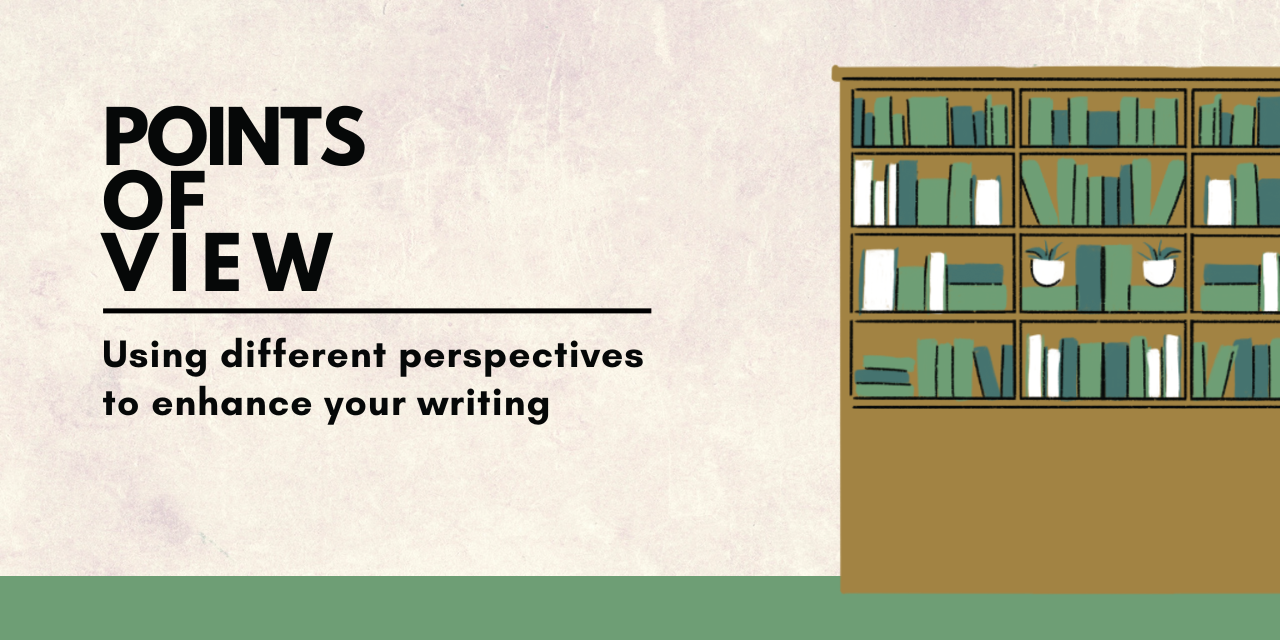
Points of View in Writing
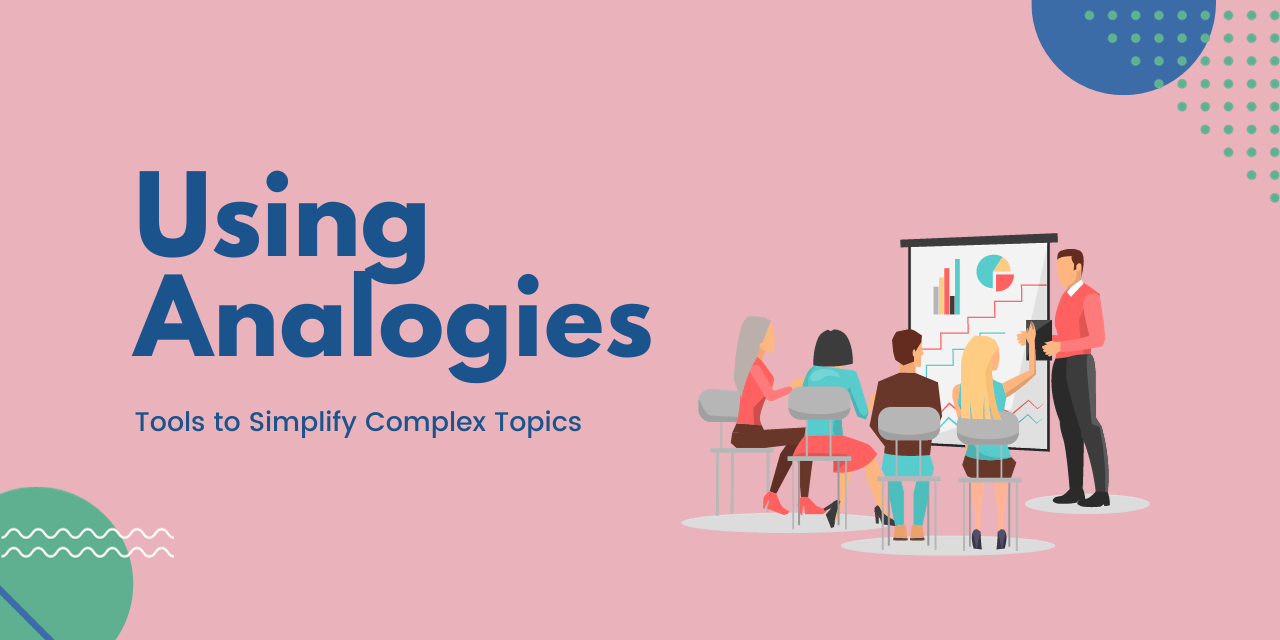
Using Analogies in Writing
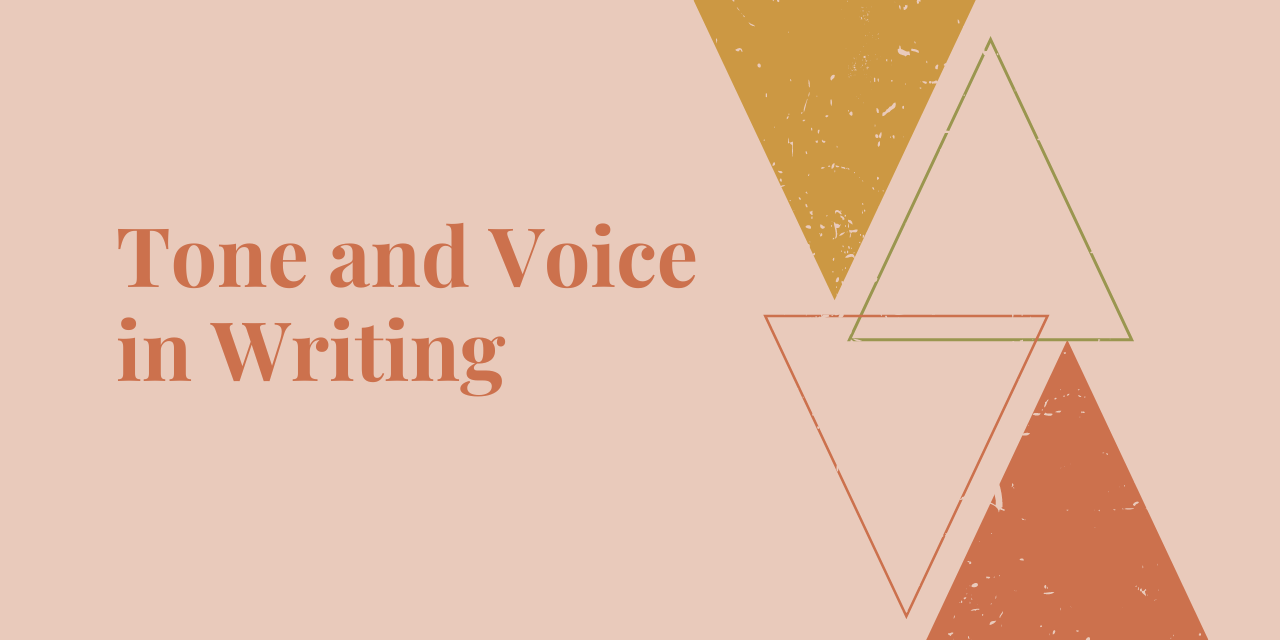
Tone and Voice in Writing
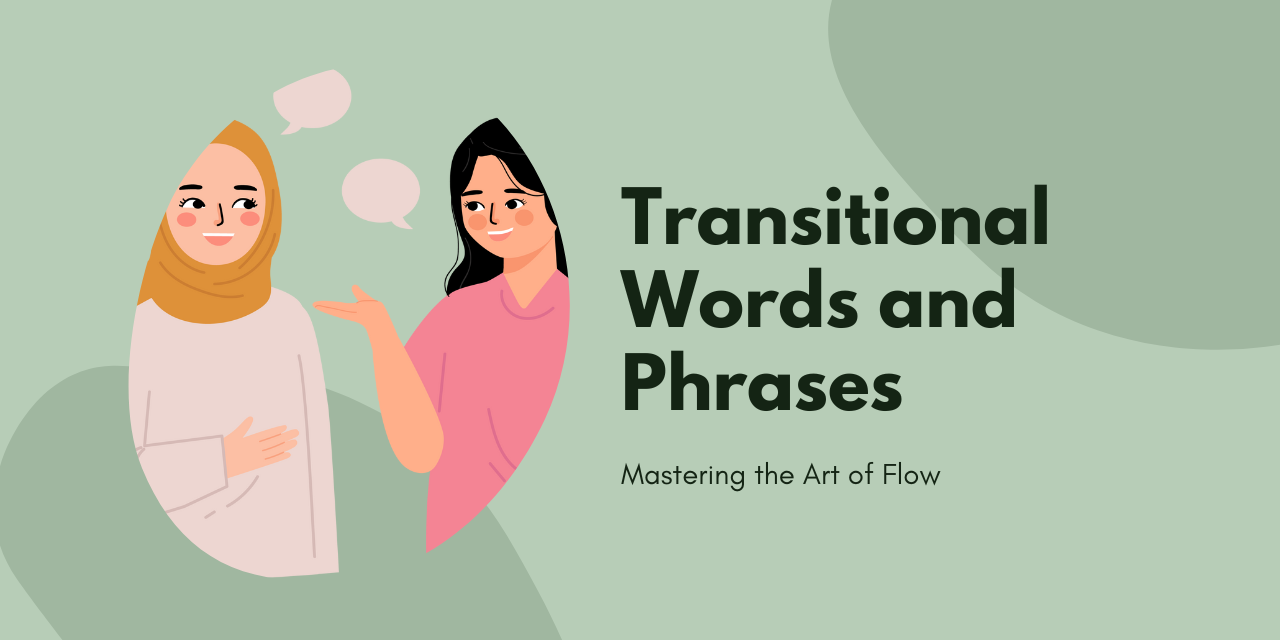
Transitional Words and Phrases
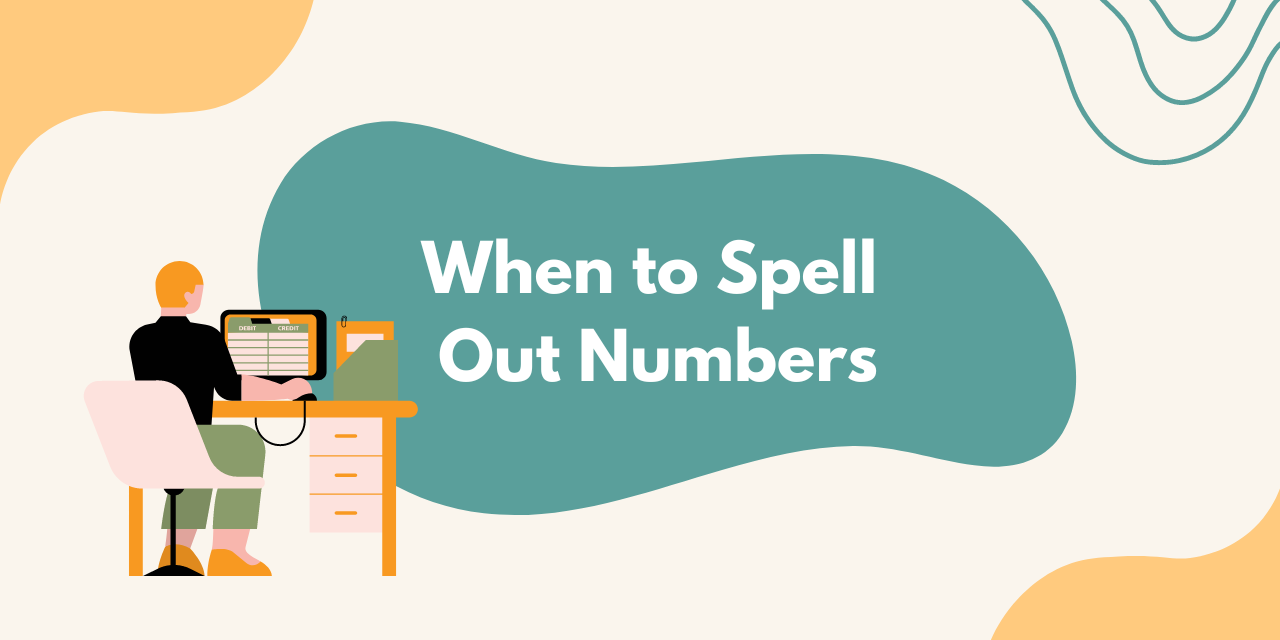
- Frequently Asked
When Should You Spell Out Numbers?
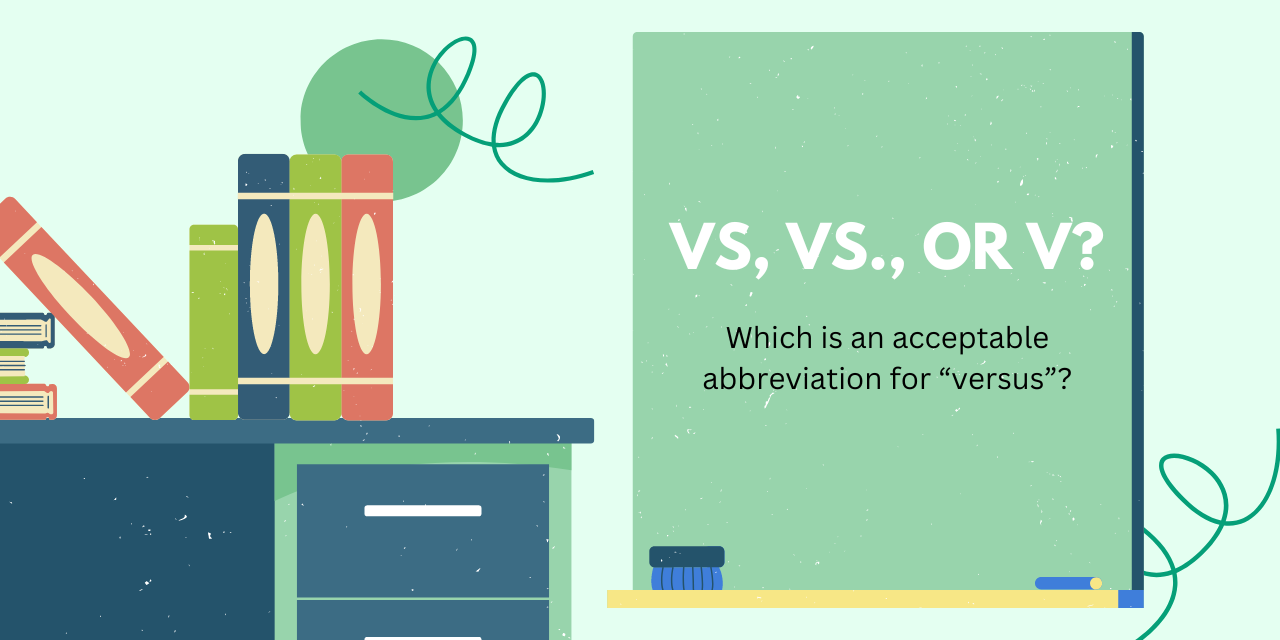
“Vs” Versus “Vs.” Versus “V.”
Join the thousands who have sharpened their business writing skills with our award winning courses..
Copyright © 2024 Businesswritingblog.com.
12 Things That Make an Excellent Writing Prompt: Your Guide
By: Author Paul Jenkins
Posted on September 5, 2023
Categories Writing , Creative Writing
You’re staring at a blank page, unsure where to start. That’s where writing prompts come in. They’re like sparks that ignite your creativity, helping you dive into the world of words.
Whether you’re an aspiring novelist or just want to improve your journal entries, understanding and utilizing prompts can elevate your writing game. Let’s explore what these prompts are and how they can transform your writing process.
Key Takeaways
- Prompts are used to stimulate creativity in writing.
- Prompts spark imagination and facilitate the creative process.
- Prompts can help overcome writer’s block and improve writing skills.
- Creating your own prompts can enhance creativity.
12 Things That Make an Excellent Writing Prompt
Here are 12 elements that can help make a writing prompt excellent:
- Specificity – The more detailed and concrete the prompt, the easier it is for writers to sink their teeth into. Avoid vague or generic prompts.
- Novelty – A fresh, original, or unexpected idea makes for an intriguing prompt that sparks creativity. Avoid overdone topics writers have seen too often.
- Conflict – Inner turmoil, moral dilemmas, and external obstacles provide built-in drama and tension. Effective prompts have an inherent conflict to resolve.
- Emotion – Prompts that make you feel something appeal to our humanity. Tap into joy, anger, fear, longing, humor, etc.
- Universality – While specific, the prompt should also touch on relatable, universal human experiences and themes. This broadens its appeal and application.
- Open-endedness – The best prompts are those without a rigid right or wrong response, which gives writers freedom to interpret, analyze, and imagine.
- Simplicity – A prompt should be easily understood. Overly complex or confusing prompts fail to inspire. Strip away excess verbiage.
- Surprise/Shock Value – Prompts that jolt readers out of their comfort zone through an unexpected question or juxtaposition of ideas pique interest.
- Dialogue – Using dialogue in a prompt helps set the scene and mood immediately, pulling the reader right into the action.
- Sensory Details – Descriptions that tap into the five senses help make a prompt vivid, concrete, and evocative. We can imagine it more fully.
- Direct Address – Speaking directly to the reader/writer in a prompt makes it active and intimate instead of passive and distant.
- Intentional Ambiguity – Leaving some purposeful ambiguity or room for interpretation in a prompt generates more possibilities and inspires deeper thinking.
Understanding the Concept of Writing Prompts

Let’s delve into understanding what writing prompts really are and how they’re used.
Prompt Origins trace back to the teaching profession, where educators utilized them as a tool to stimulate student creativity. They’d present a topic or situation, giving you a springboard for your imagination and kickstarting your writing process.
However, there are Prompt Limitations to be aware of. While they can spark ideas, sometimes it might feel like you’re boxed in by their specifics. You’ve got to remember that it’s just a start point; don’t let it restrict your creative flow. In fact, use those limitations as challenges to expand upon!
Importance of Prompts in Creative Writing

They’re essential in sparking imagination and facilitating the creative process in literature. Prompts act as a catalyst, guiding your mind to explore unchartered territories of creativity. Prompt Inspiration isn’t just for writers; it’s for anyone who wants their ideas to soar.
- Prompt Limitations : They may seem restrictive, but they actually force you to think outside the box.
- Novel Ideas : A single prompt can lead to countless unique stories.
- Overcome Writer’s Block : Stuck? A prompt could be the nudge needed to get those words flowing again.
- Skill Improvement : Regular use of prompts can refine writing skills over time.
Various Types of Writing Prompts

You’ll be amazed at the variety that exists, from visual cues to single word challenges, each designed to ignite your creativity in a different way.
Selecting the right prompts is essential; thus, understanding the Prompt Selection Criteria becomes important. Whether it’s a picture prompting you to describe or a single word nudging you towards crafting an intricate tale – choosing wisely can make all the difference.
Prompt Impact Analysis allows you to measure how effective a prompt has been in stimulating your creative juices. It aids in evaluating if a certain type of prompt works better for you than others and helps fine-tune your approach towards future writing tasks.
How to Effectively Use Writing Prompts

In order to effectively use these creative catalysts, it’s crucial that you understand their purpose and how they can be best tailored to your personal style. Prompt selection is key; choose prompts that resonate with you or challenge your creativity.
Here are four ways on how to maximize prompt flexibility:
- Adapt : Don’t feel tied down by the exact wording of a prompt. Modify it if needed.
- Combine : Blend two or more prompts for a unique twist.
- Expand : Use the prompt as an initial spark, but let your thoughts wander beyond its boundaries.
- Revisit : Return to old prompts when you’re stuck; they might inspire new ideas.
Tips for Creating Your Own Writing Prompts

When it comes to sparking your own creativity, creating your own unique cues can be a game changer. Think about prompt inspiration sources that resonate with you personally. Maybe it’s an overheard conversation, a striking image, or an intriguing news article. Start jotting down ideas as they come and don’t worry about making them perfect; the goal is to get the creative juices flowing.
Designing prompts for different genres can also broaden your writing horizons. You’re not just limited to fiction or poetry; you could create prompts for essays, travelogues, even song lyrics!
So, you’ve learned about writing prompts and their significance in sparking creativity. You’ve explored different types and how to use them effectively.
But remember, creating your own prompts can be just as rewarding! Keep experimenting, keep writing, and you’ll see the magic unfold.

Understanding writing prompts
Contributor: Aaron Smale
For many college papers, a prompt will ask questions related to readings and class discussion, asking you to demonstrate analysis and discussion of the topic. Decoding what a prompt is asking can sometimes be overwhelming. The sooner you understand a prompt, the sooner you can start writing. Here are some useful tips to understand writing prompts:
As soon as you receive the prompt, read through it twice:
- Though many prompts are complex to encourage well-reasoned responses, they can be confusing/inaccessible if read only once before drafting. Reading the prompt as soon as possible may help you identify how long a paper should be, how much information you should gather, and can reveal concepts you need to understand before approaching the assignment.
Once you have read the prompt, try to share out what you think the prompt means to a friend, family member, or another student:
- This helps to “check” if your understanding of the prompt matches that of other people outside of the class and may help to identify what you still need to know.
Key words can identify the type of assignment that the prompt is calling for :
- Most prompts signal if the paper is expected to be a compare-and-contrast paper, rhetorical analysis, synthesis paper, etc. Keywords may include terms such as compare, synthesize, develop, explore, etc.
Come back to the prompt and highlight key characteristics, terms, and phrases relevant to the topic/assignment and compare it to course notes/assignments:
- When reviewing the prompt, highlight terms or phrases that have come up frequently in discussion or are significant in the course. You may also choose to highlight terms in the prompt that you need to study more. Sometimes a prompt asks you to recall resources or texts from an earlier point in the course, so a review of key sources, topics, course notes or related assignments can help you to write an effective paper. Additionally, this reveals key scenes or text sections identified within the prompt.
Look for language in the prompt that indicates who the target audience is:
- Even though your audience will often include your professor and peers, some prompts for research papers and essays will ask you to address other target audiences. For example, a paper that discusses a new method of patient support may cite a hospital board of directors as a potential audience. By identifying your target audience, you can establish context necessary for your audience to engage with your paper.
Prepare questions for discussion to ask your TA or professor regarding parts of the prompt that are unclear:
- Once you have gone through the prompt itself, make a list of questions to discuss with your professor or TA so you can get more clarity on the assignment.

What is a Prompt in Writing?

Written by Haley Boyce

Motive. That’s the reason we do anything. Usually, there’s some sort of attached incentive – drinking coffee because it’s six in the morning and you’re not your best self until you’re about halfway through that first cup, going on a run for a healthier heart, enrolling in a creative writing program to network and get that first chapter of your novel going. These are things you do because you were compelled in some way. You were prompted to do it.
A prompt in writing is what motivates or compels you to write. It also tells you what to write about. It can come from a writing instructor, a friend in a writing group, or it could be ready-made prompt you found online or even wrote yourself. It doesn’t matter where it comes from, what matters is that you understand it and respond to it appropriately.
What is a Writing Prompt?
Writing prompts are instructions for what to write about.
Sometimes they include how long your writing should be, sometimes they specify which writing style ( APA , MLA, AP, Chicago), and sometimes they can be either very specific about what should be included or terribly vague.
Different Types of Writing Prompts Draw Out Information and Perspectives for Different Applications
The kind of writing prompt you receive depends largely on why you’re receiving one in the first place. Let’s take a look at a few different scenarios and the types of prompts you might find in each one.
Literary Analysis Prompts
- Literary analysis is pretty much what it sounds like - analyzing something in literature. You will be assigned a work of literature to read, then you will be instructed to write an essay with your response to the prompt to include your observations, connections, and quotes from the story to support your argument. You’ll see this type of prompt in any prerequisite English class, and if you’re majoring in English or creative writing, you’ll spend so much time responding to literary analysis prompts that you’ll wind up missing them like an old friend when you graduate.
- Literary analysis prompts will usually ask you to discuss theme, character, a particular element of style exhibited by the author, or an element of plot and its impact on the story overall.
You’ve Been Responding to Literary Analysis Prompts Ever Since Book Reports in Your Middle School Language Arts Class

[For much of the novel, the Greasers are seen as hoodlums by the people in their town. This view changes toward the end of the novel when they are proclaimed heroes after saving the children from the burning church. However, they would not have been at the church at all if they hadn’t killed Bob and run away.
What do you think? Are the Greasers heroes or hoods?]
To respond to this prompt, a writer should choose one side of the argument (heroes or hoods), then include quotes from the story and explain why they prove their point.
Creative Nonfiction Prompts
- While in a creative writing program, you might have the opportunity to write a piece of creative nonfiction. Prompts in this type of setting will ask you to tell a story about something that actually happened – oftentimes something that you experienced firsthand – but with a twist.
- You could be asked to write something like this: Tell the story about something dramatic that recently happened to you, but from the perspective of someone who witnessed it. Here, the writer is being asked to make themselves somewhat vulnerable by sharing what could be a rather personal story. They are then prompted to get creative with the situation by seeing it through the eyes of a person who may have seen the episode differently. Responding to a creative nonfiction prompt will not require quotes or explanations to prove a point. The prompt is answered by telling a true story in a creative way.
Nonfiction Prompts
- Nonfiction prompts will be found in scenarios where a scientist has conducted research and must write very precisely about the observations, hypothesis, research, and the outcome. In cases such as this, a scientist will be prompted to write based on a study they have conducted because of possible cause and effect. These are the types of prompts you would come across in science-based classes at a college or university.
- In situations where a nonfiction scientific paper is being written, strict APA style guidelines should be followed.
- Journalism is another form of nonfiction in which a prompt is often based on a journalist's assigned beat. Prompts will come from news and events that are best suited to their publication.
Would You Rather . . .

These prompts are most likely not something you’d find as a writing assignment in a college or university creative writing program, but they are definitely a clever tool to get you to think beyond the typical writing styles, which can start to feel a little stale after a while.
Other times, you might find that a deeper approach to an either/or scenario is the perfect writing prompt for your creative mind. Would you rather time travel to the past to meet your great-great-great grandparents or time travel to the future to meet your great-great-great grandchildren? … Would you rather be known for being someone who stopped a war or started one? … Would you rather know what everyone thought about you or not care what anyone thought about you at all?
You might have a knee-jerk reaction to each of these prompts, knowing what your initial answer might be. But when you step back to consider the pros and cons of each side, there are strong reasons to choose either one. Each of these “would you rather” writing prompts sparks debate, eliciting careful reflection and explanation. The creativity and impact for something that seems so simple on the surface has the power to inspire a complex thought process, and therefore, meaningful writing.
How to Start a Writing Prompt

If you learn only two things from this section, let it be that smart people ask questions (that’s how they got so smart. And you’re smart, so go ask for help), and that the best way to start responding to a writing prompt is to first understand how the prompt is put together.
A writing prompt usually has two main parts.
When reading a prompt, look for:
- The writing situation: In a writing situation, the prompt will present the general topic students are being asked to write about.
- Directions: Look for expectations of the task you are being asked to meet. This might include what type of essay you’re supposed to write (expository, narrative, persuasive, etc.), format, evidence from the text, length/word count, etc. Elements to include in the essay will vary depending on the instructor and course, but they will be included in the prompt regardless of subject.
You’ve identified the writing situation and directions. So now what? It’s sometimes (most times) helpful to make a little list of the prompt’s basic directions. Jot them down as bullet points on a sticky note and keep it on your computer monitor while doing your research and organizing your evidence or notes. Like this:
- Literary analysis essay
- Theme in Little Women
Figuring out the prompt can sometimes be half the battle. Once you understand what’s being asked of you, you’re bound to have some sort of answer to use as a jumping off point. Take your time deciding the best argument for your paper by choosing an answer you not only care about the most, but also the one that has an abundance of evidence to support your claim.
Prompts in writing are meant to evoke a response from the writer that is passionate and believable. The writing process doesn’t always feel like a party but knowing how to read a writing prompt definitely makes it more enjoyable.
Search the blog
Input your search keywords and press Enter.
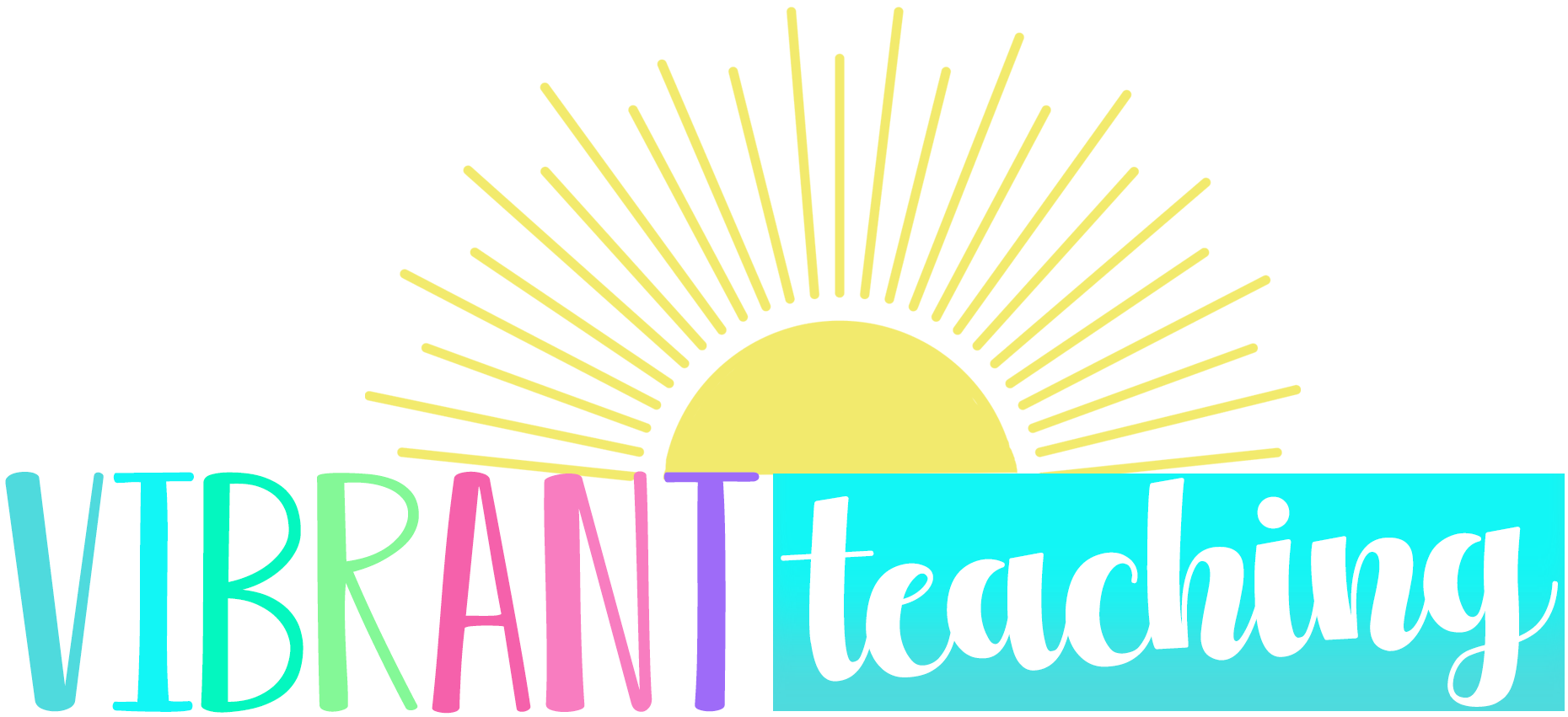
Vibrant Teaching
Teaching Resources Creator and Blogger
What are Writing Prompts? A Helpful Guide for Teachers
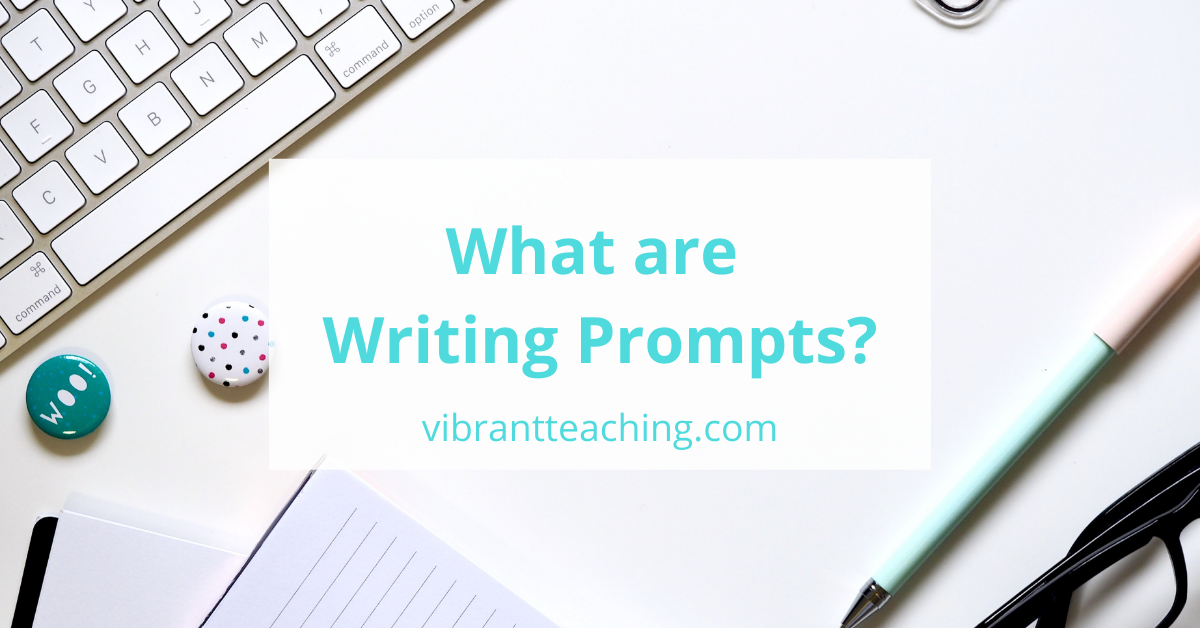
So you might be asking yourself, “What are writing prompts?” A writing prompt introduces a topic and encourages the student to write in a certain way. It provides an idea or starting point by using words or an image. Writing prompts are also helpful to engage students and help them generate ideas more quickly.
The Importance of Writing Prompts
Writing prompts are beneficial because they can be used with various grade levels and across multiple subject areas. This valuable writing tool helps all types of writers from struggling to advanced. Plus prompts increase students’ confidence, creativity, and writing skills.
The possibilities are endless. Writing prompts can be used for morning work, classwork, centers, homework, and assessments. They are also easily differentiated based on grade level or student ability. Responses can vary by length or kids can respond verbally if needed.
Writing Prompt Benefits:
- Applicable to any grade level and subject area
- Easily differentiated to meet individual needs
- Ideal for both print and digital resources
- Helps generate ideas
- Builds student’s confidence
- Increases engagement and motivation
- Promotes creative writing
- Boosts writing skills
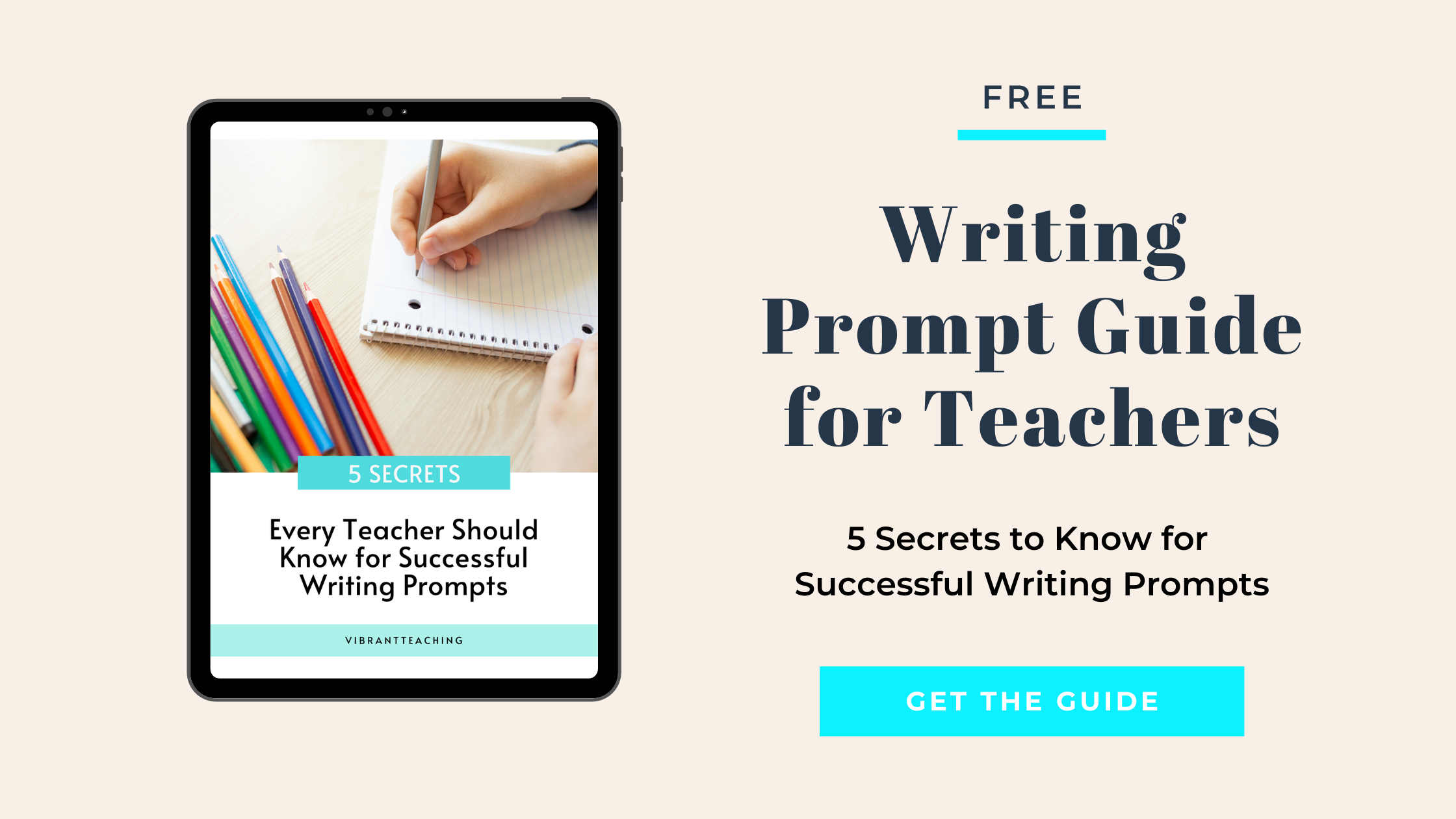
Different Types of Writing Prompts
There are many different writing prompts that can be used in the classroom. Let’s break it down into categories to learn more about each option. It’s helpful to try a variety of the examples below to engage students and build their writing skills.
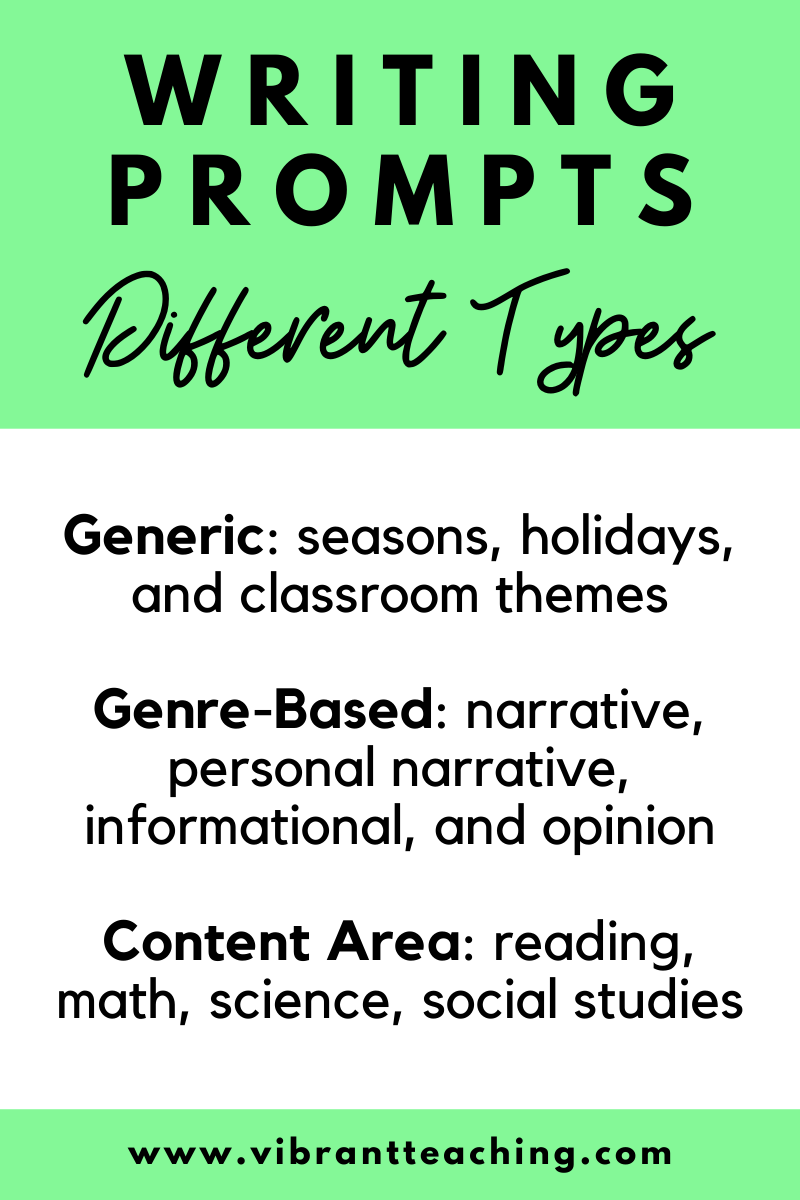
Generic Writing Prompts
Generic prompts are the most versatile and can be used throughout the year. These can be assigned daily, weekly, or monthly. Some ideas include seasons, holidays, and classroom themes.
Seasons Examples:
- Apple season has begun. Write a story about an apple that escapes from the farm.
- What would it be like to live in a snow globe?
Holiday Examples:
- How would you convince a friend to give you all of their Halloween candy?
- If you could have one famous person over at your house for the holidays, who would it be and why?
Class Theme Examples:
- What are some ways you can help another kid if they are being bullied? (Anti-bullying)
- If you could become a character in any story, which book would you choose and why? (Read Across America)
Genre Writing Prompts
Genre-based writing prompts are related to a specific writing unit. Some examples include narrative, personal narrative, informational, and opinion writing. These prompts are also helpful because they are aligned with the Common Core Standards. Check out some examples for each genre below.
Narrative Examples:
- What if you were given 3 wishes but couldn’t use them on yourself. Tell a story about what you would wish for and why.
- I was taking my friend’s picture in front of the volcano when all of a sudden . . .
Personal Narrative Examples:
- Write a story about a time you felt your heart race. What happened and how were you feeling at the end?
- Have you ever been so proud of yourself for learning something new? Write a story about a time this happened.
Informational Examples:
- Explain the ways someone can be a good friend. Be sure to include character traits and how they should act.
- Imagine someone has never played your favorite game. Explain the steps so they can learn how to play.
Opinion Examples:
- Would you rather live somewhere that’s extremely hot or extremely cold?
- Should kids get money for doing chores or should they just do it to help out at home?
Content Area Writing Prompts
Content area prompts are based on a specific subject such as reading, math, science, or social studies. Prompts can be based on a unit of study for that content area. It’s a similar idea to genre prompts, except those are based on writing units of study.
*Since prompts will be based on the subject area that you teach, here are some topic ideas instead of actual prompts.
- Unit of study
- Guided reading book
- Independent reading book
- Addition and subtraction
- Multiplication and division
- Measurement
Social Studies:
- Communities
- Citizenship
There are a variety of writing prompts to choose from that will engage and motivate students. With so many options, teachers will be able to easily incorporate these ideas into their classrooms. Choose from generic, genre-based, or content area prompts depending on your needs.
Don’t forget to grab your Free Writing Prompt Guide . This valuable resource will give you everything you need to know about writing prompts. They are ideal for morning work, writing time, centers, and homework. Click the link to get started.
Writing Resources
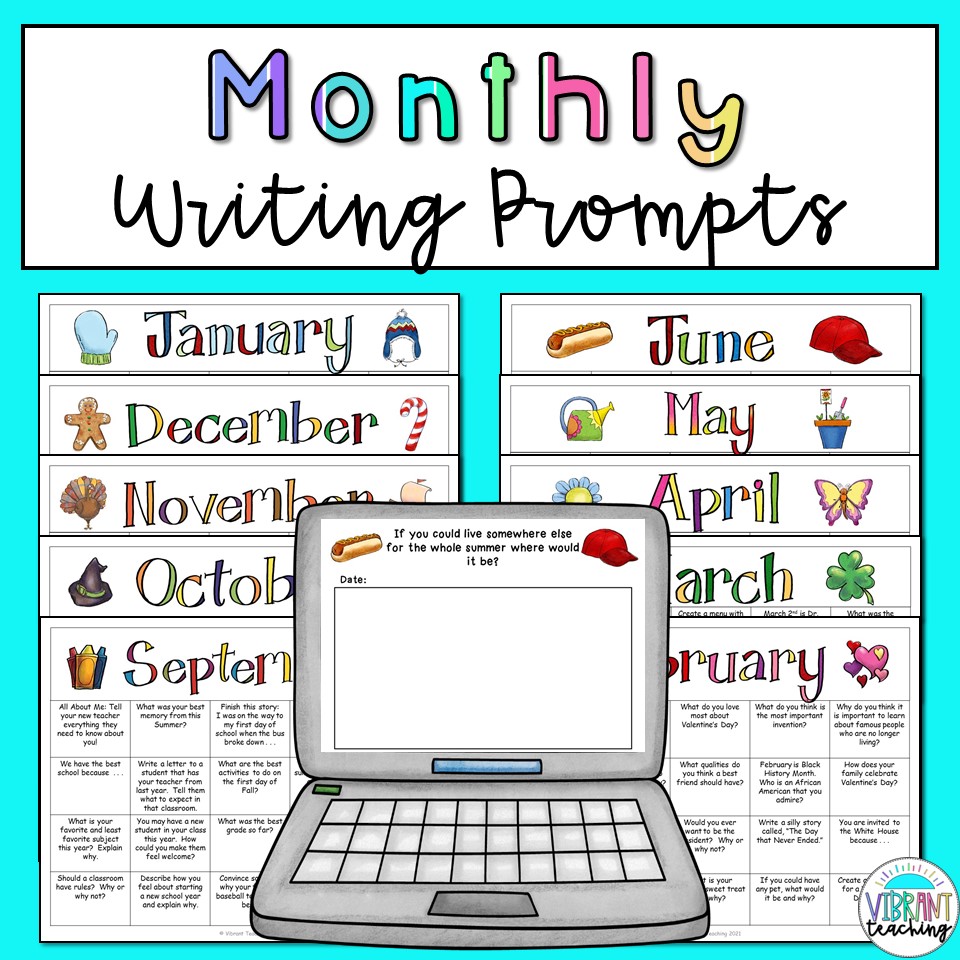
Related Articles:
- How to Use Writing Prompts Daily
- 6 Important Writing Prompt Examples for the Classroom
Monthly Writing Prompts to Engage Students and Make Writing Fun
- Narrative Writing That Sparks Creativity
- Opinion Writing That Motivates Kids
- Information Writing That Empowers Students
Angela Sutton
Related posts.

Examples of Descriptive Writing Using the 5 Senses
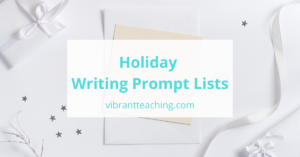
Holiday Writing Prompt List to Inspire Kids
No comments, leave a reply cancel reply.
I accept the Privacy Policy
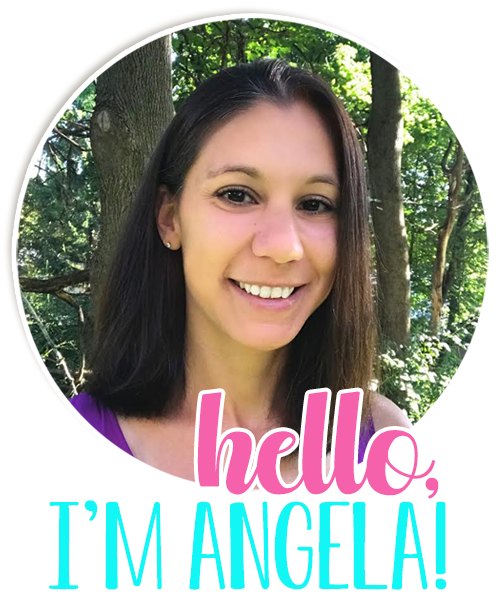
I specialize in helping elementary teachers with writing resources, tips, and ideas. My goal is to save teachers time and energy so they can be vibrant inside and outside of the classroom! Read More
SEARCH THE BLOG
Subscribe to our mailing list.
Get the news right in your inbox!
Health and Wellness
What Is a Writing Prompt?
Karen is a freelance writer with more than 25 years of experience writing for an array of publications, including authoring several books.
Learn about our Editorial Policy .
A writing prompt offers a method for writers to focus, practice, and expand creatively. Prompts serve as jumping-off points to help you hone your craft as a writer.
Anatomy of a Writing Prompt
A writing prompt is usually a statement followed by questions you can use to craft a piece. The initial statement focuses on a particular subject or an area. For example, a creative writing prompt might suggest, "Describe a cold, empty place."
- 30 Love Letter Prompts for a Note They'll Treasure Forever
- Mindful Journaling for Self-Reflection (+ 29 Writing Prompts)
- 64 Thought-Provoking Journal Topics and Prompts for Kids
To further focus the writer, the prompt may then pose a series of questions or offer suggestions for details. For example, for the cold, empty place writing prompt, questions to help the writer focus might include:
- Why is the place cold and empty? What has happened here to make it so?
- What is the overall feel there?
- How does it look?
- How does it sound? How does it smell?
- How does being here make you feel?
Types of Writing Prompts
There are many types of prompts to help you focus on all aspects of writing. Examples include:
- Creative writing prompts spark creativity.
- Non-fiction prompts may focus on all sorts of things, including biographical information, historical events, descriptions of places or works of art, and many others.
- Poetry prompts serve as inspiration to write poems.
- Descriptive writing prompts develop description skills.
- Expository writing prompts help you explain or teach.
- Journal writing prompts offer ideas for journaling.
- Mystery writing prompts are great for writers of whodunnit fiction.
- Narrative writing prompts help you develop a narrative voice and style.
- Short story prompts allow you to tell a brief tale.
- Speculative writing prompts encourage you to explore a given topic by asking questions such as "what if?"
- Essay prompts help student writers focus on or find topics.
Using Writing Prompts
There's no wrong way to use a writing prompt. While prompts are intended to spark imagination, you can also use them to help in your writing work. For example:
- A writing prompt may invite you to explore a dream you later use as part of a novel or short story to show character development.
- Journal or speculative prompts may help bloggers come up with daily topics to continue to engage reader interest.
- The output from a descriptive prompt may show up later in a work of fiction or non-fiction to help add depth.
- A student might use the result of an essay prompt on a college entrance essay.
- A non-fiction writer might use the output from an expository prompt as a starting point for a how-to book or article.
Tips for Working With Prompts
In his book Outliers , author Malcolm Gladwell suggests that you need to spend about 10,000 hours practicing in order to gain mastery-level proficiency with your craft. While there is debate about the actual amount of time needed for proficiency, it's clear that to hone any craft, including writing, it's necessary to spend time performing and practicing it.
Writing prompts offer you the opportunity to build skill and the more time you spend writing, the better you will become at it. You can choose to use writing prompts in any way that feels comfortable to you.
- Choose a daily prompt and write for 30 minutes each day.
- Use a prompt when you are feeling creatively blocked.
- Use a prompt if you are struggling to come up with a topic.
- Join a prompt-based writing group to learn how the same prompt sparks different writers and to receive feedback on your writing.
- Use the prompt as a starting point, but feel free to wander if you move in a different direction than the prompt suggests. Allow your own creative expression to step in and take control.
- Try seeing the prompt as a metaphor instead of taking them literally. For example, with the cold empty space prompt, you could use it as a metaphor for a cold, empty person and describe that person.
- As soon as you read the prompt, start to write. Try a process called continuous writing. Keep your fingers typing or your pen moving throughout the entire exercise. If you get stuck, write the same word over and over until your brain unsticks and you start to move again.
- Don't judge what you're writing or edit as you write. Go back and edit later.
- Prompts don't have to be word-based. You can use photographs, artwork, songs, sounds, aromas, or things you see around you to spark your writing creativity, as well.
Exploring Your Potential
Prompts allow you to explore your potential as a writer. They are fun exercises designed to spark creativity, help you hone your craft, and to allow you move forward as a confident writer.

How to do a Writing Prompt - Tips, Apps, and Prompts for Beginners
Writing is simple, but not easy..
Anyone could string a series of letters into words, and words into paragraphs. However, it takes practice for anyone to consider themselves a ‘writer’, an artist who creates art with words.
Why are prompts important for writers?
Prompts can provide a starting board for writers to get started. They give a writer a starting point where they could stop thinking and simply start creating. By using a prompt as a guide, they can focus on responding as opposed to fussing about becoming the next Shakespeare.
Prompts are the cure for the infamous writers’ block that halts the progress for several creatives. It gives the writer something to respond to when analysis paralysis prevents them from making a decision about what to write about. Prompts are quick solutions to spark the creative flame that are within all creatives.
How to respond to a writing prompt?
There are several ways one could respond to a prompt . However here are the best practices of two ways a new or experienced writer could approach a writing prompt.
Quick Brainstorming Session Followed by Writing
Once a prompt is given, a writer could take a minute to quickly brainstorm on the corner of their paper or in their mind what they want to write about. They could ponder a quick, beginning, middle, and end for their piece so that it matches with the prompt while still being considerate of the time. The maximum amount of time anyone should spend in this phase is 3 minutes, though depending on the time allotted for the prompt, that could change.
The writing process then could begin as normal. The writer could use the most basic of writing applications such as Microsoft Word or opt for an online application such as Google Docs or Memo Notepad.
“Winging It” or Stream of Conscious Writing
If the prompt suddenly inspires a writer, then they could skip the brainstorming process altogether. The writer could string word after word together as they appear in their mind. This kind of writing is known as ‘stream of conscious writing’, though for many, they would consider this method ‘winging it’.
By allowing the mind to simply come up with words on the page, you will likely get plenty of spelling and grammatical errors. The tradeoff for the messy writing is that you get raw edited material that simply flows onto a page.
If you are doing this digitally, you may even consider banning the backspace or delete key altogether while doing your prompts. This will prevent even the most seasoned writers from editing their work as they go and force them to focus on one thing, and one thing only. Writing.
Two online programs actually provide a way to either cancel or remove the backspace key. These two are Write or Die or The Most Dangerous Writing App .
Where should you write your prompt?
The oldest method is grabbing the nearest notebook and pen to start responding to your prompt. This could be the most reliable method of getting your ideas onto something physical and then what you’d need to worry about is an equally reliable system of filing away your writing or scanning it into a web version for later reference if desired.
Applications to use for writing prompts
Below are several applications that were briefly mentioned above, but detailed below so that writers could see what works best for them.
Microsoft Word
Word is a computer application that has been around in the market for eons. It’s old, it’s relatively reliable, and can safely live in your Documents folder for quick accessibility. The only downside is that if the application crashes, there’s a chance of you losing your work.
Google Docs
Docs is the alternative to Microsoft Word. It’s handy since it’s tied to one’s Google Account and syncs up with the cloud. Google Docs, unlike word, autosaves every couple of seconds so if one closes the browser accidentally or if it crashes, your work is saved. The added bonus is that since this is an online application, you could start your process on one computer and then continue refining it later on another one at your earliest convenience.
Memo Notepad
Memo Notepad is an online application that also is free to use. You can start tackling your prompt on the browser without making an account and as long as you use the same computer and don’t delete your cookies, you can go back to your work as if nothing ever happened days later. If you create a free account, you can have your writing tied to your account without worrying about losing your work. Finally, within the program, you could quickly create new documents or email them to yourself when done.
Write or Die
Write or Die has been around the block for several years and has a rather unappealing interface. However this free to use web app is good for beginners wanting to get better at simply writing without editing. It’s an app that has a premium option that is not required, but will add-on several features if you do opt for it.
The Most Dangerous Writing App
The Most Dangerous Writing App is a newer online application that you can access on the web. You set a time and then start writing. Unlike Write or Die, The Most Dangerous Writing App is much less forgiving and is one to recommend to experienced writers or those who love a challenge. The interface is beautiful to look at, but it comes at the cost of potentially losing all your progress if you stop writing.
Where to find prompts?
There are a plethora of prompts to be found online. You can go on Pinterest, Google, or Twitter and find various kinds of prompts. Here are a few to get you started and save you time on searching the best places for you:
10 Week Prompt Challenge
We highly recommend the 10 Week Prompt Challenge, especially if you are just getting started on responding to prompts. It only takes 15 minutes a week for you to do and it’ll get you slowly but surely used to the idea of responding to prompts on a weekly basis.
It’s a free resource that we highly encourage all writers, and creatives, to jump into so that they can start developing the habit.
Daily Twitter Prompts
For individuals who want daily prompts, we post them at 3PM EST on our Twitter account Take15Min. We highly encourage you to follow us on Twitter so that you could get your daily dose of prompts. Similar to the 10 Week Prompt Challenge, we encourage our followers to respond to our prompts in 15 minutes.
Pinterest Boards
For those individuals who are more ‘image’ oriented as opposed to text-based, here are a few Pinterest boards we recommend you follow for prompts. As they say, a picture is worth a 1000 words and hopefully one of these boards will help you as a writer get started.
Take 15 Prompt Pinterest Board
Sarah D. Shotts Writing Prompts Board
Noctus Fury Picture Prompts Board
Writer’s Write Writing Prompts Board
This is another social media platform that provides plenty of prompts for you to work from. Some of these are inspirational, others are text-based, while some are images to inspire you. Regardless of which method works best for you, we highly recommend you give these accounts a follow.
Writing Prompt.s
Writing Prompts Photos
15 Minutes of Creativity
Where to Publish Prompts?
While we highly believe that prompts are simply starting boards to jumpstart your creativity, you may want to share your work. In this day there are several options for you to choose from.
Medium Is a free online platform that you can use to showcase your writing. It’s an easy-to-use website that has millions of readers who may read and share your work.
Tumblr is a community where you could post your work for others to view. It’s relatively simple to create your account and there are lots of people there who could share your work and get views.
If you plan on sharing more than one piece of work and want to make sure that your work is fully credited to you, then we recommend you start a blog.
We highly recommend SquareSpace as a platform to create your blog since its easy to use and makes your site look professional, but other alternatives are Wix, WordPress, and Blogger.
Do you have any tips for beginning writers?
If you are a beginner, then we’d love to hear what other questions or concerns you have about writing. The more questions you ask, the better we can help you get disciplined about practicing your craft.
If you consider yourself a veteran writer, then what are some other tips or lessons you’d want to share with beginner writers? Do you find using prompts valuable whenever you experience writer’s block. We’d love to know your thoughts.
Sign up with your email address to receive news and updates.
Thank you for subscribing! While we are still growing, we’d appreciate any feedback about news that you’d like to hear!

What is a writing prompt?
A writing prompt, in its essence, is a catalyst – a spark that ignites the writer’s imagination and creativity. it’s an invitation to embark on a journey of narrative exploration. what’s fascinating about writing prompts is their boundless potential; they can come in a variety of forms and from countless sources. it could be a short statement, a curious question, an intriguing conversation, an inspiring experience, or even a captivating image..
At Kids Think Wide, we understand that writing prompts are more than just written stimuli. They are gateways to countless worlds, situations, characters, and emotions that a writer can explore and express. Our platform harnesses the power of pictures as writing prompts – a unique approach that brings the adage ‘a picture is worth a thousand words’ to life.
Whether it’s a narrative, description, explanation or persuasive text a picture prompt serves as a canvas for the writer’s creativity. It invites children to dive into their imagination, encouraging them to see, feel, and think beyond the boundaries of the conventional.
Picture prompts stimulate the senses, evoke emotions, and inspire narratives. Each image is an open-ended question, an invitation to adventure. Some may pose a challenge, pushing the creative boundaries of the writer, while others are designed to simply inspire fun narratives.
Here’s a glimpse of what a writing journey with our picture prompts could look like, simply click on each image to enlarge and see the discussion questions and writing prompts:

As you can see, the possibilities are endless, and the creative journey is exciting and enriching.
Writing prompts, especially picture prompts, can significantly enhance students’ writing skills, foster creative thinking, and offer a vibrant avenue for self-expression. They can turn the daunting task of writing into a thrilling creative adventure!
Here are a few tips to get the most out of using picture prompts:
With a dash of planning, a pinch of effort, and a whole lot of creativity, picture prompts can be a powerful tool to help students elevate their writing skills and boost their creativity. So next time you’re looking for an engaging, imaginative, and effective way to inspire writing, delve into the world of picture prompts with Kids Think Wide!
More Articles Await

Introducing Kids Think Wide
Welcome to KidsThinkWide.com, where we inspire children to dream big, think wide, and write creatively. Our unique platform is packed with engaging picture prompts and fun writing prompts designed to ignite imagination and turn writing into an exciting adventure. Parents and teachers will find an invaluable resource for stimulating discussion and encouraging thoughtful responses. Join us as we transform writing…
View More »

How do I make writing fun?
Explore a world where writing becomes a thrilling adventure for kids! With the power of writing prompts, the fun of collaboration, the inspiration of visuals, and the relevance of their own interests, kids can discover joy in weaving words. Our 'Choose Your Own Adventure' narratives and other activities create a space where creativity flows freely, ideas are shared, and every…
Jump to navigation
- Inside Writing
- Teacher's Guides
- Student Models
- Writing Topics
- Minilessons
- Shopping Cart
- Inside Grammar
- Grammar Adventures
- CCSS Correlations
- Infographics
Get a free Grammar Adventure! Choose a single Adventure and add coupon code ADVENTURE during checkout. (All-Adventure licenses aren’t included.)
Sign up or login to use the bookmarking feature.
Analyzing Writing Prompts
Minilesson print.
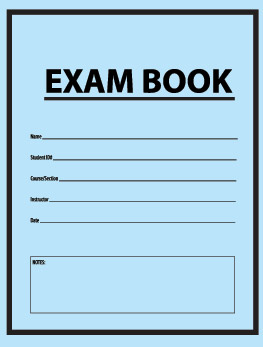
Some tests include writing prompts. A prompt tells you what to write about and why you are writing. A prompt might also tell the type of writing to create and who will read it.
Before you begin writing your response, you need to analyze the prompt to make sure you understand it. You can use the PAST questions.
P urpose: Why am I writing? What is my goal? Look for key words about your purpose.
- argue: present facts and reasons that support your opinion or position
- compare: tell how two things are alike
- contrast: tell how two things are different
- define: tell what something means, what it is, or what it does
- describe: tell how something looks, sounds, smells, tastes, and/or feels
- explain: tell how something works, how it happens, or how to do it
- list: give a number of facts, ideas, reasons, or other details about the topic
- persuade: give reasons that would convince someone to agree with your position
- predict: tell what you think will happen in the future
A udience: Who will read the writing? Some prompts will identify a specific audience: Pretend you are telling the story to an older family member. When a prompt does not identify an audience, it's safe to assume that your teacher is the audience.
S ubject: What is the subject of my writing? Knowing the subject helps you focus on your topic.
T ype: What type of writing should I do? Most prompts will tell you what form of writing to create (for example, a persuasive paragraph or a comparison-contrast essay)
Note how the PAST questions work with this prompt.
In an essay, explain to new students how certain things are done at your school. Choose three things you think any student should know about your school. Explain how each one works.
P urpose: To explain
A udience: New students
S ubject: Three things at your school
T ype: Essay
Your Turn Answer the PAST questions for each of the following writing prompts.
- Smartphones, tablet PCs, and social media are changing the ways that people live, work, and connect. Write an essay that explains to your fellow students the ways that you connect digitally.

From pages 158, 190, 216, 421, 422 in Writers Express
Teacher Support:
Click to find out more about this resource.
Standards Correlations:
The State Standards provide a way to evaluate your students' performance.
- 110.5.b.6.B
- 110.5.b.9.D
- LAFS.3.RI.1.1
- 110.5.b.11.A
- 110.5.b.11.B.i
- 110.5.b.11.B.ii
- LAFS.3.W.2.4
- 110.6.b.9.D
- LAFS.4.RI.1.1
- 110.6.b.11.A
- LAFS.4.W.2.4
- 110.7.b.9.D
- LAFS.5.RI.1.1
- 110.7.b.11.A
- LAFS.5.W.2.4
- 110.22.b.5.F
- 110.22.b.8.D
- LAFS.6.RI.1.1
- 110.22.b.10.A
- 110.22.b.10.B
- LAFS.6.W.2.4
- 110.23.b.5.F
- 110.23.b.8.D
- LAFS.7.RI.1.1
- 110.23.b.10.A
- LAFS.7.W.2.4
- 110.24.b.6.C
- 110.24.b.8.D
- 110.24.b.8.E
- LAFS.8.RI.1.1
- 110.24.b.10.A
- LAFS.8.W.2.4
- 110.36.c.4.F
- 110.36.c.5.C
- 110.36.c.7.D
- 110.36.c.7.E
- 110.37.c.4.F
- 110.37.c.5.C
- 110.37.c.7.D
- 110.37.c.7.E
- LAFS.910.RI.1.1
- LA 10.1.6.g
- 110.36.c.9.A
- 110.36.c.9.B.i
- 110.36.c.9.B.ii
- 110.37.c.9.A
- 110.37.c.9.B.i
- 110.37.c.9.B.ii
- LAFS.910.W.2.4
- 110.38.c.4.F
- 110.38.c.5.C
- 110.38.c.7.D.i
- 110.39.c.4.F
- 110.39.c.5.C
- 110.39.c.7.D.i
- LAFS.1112.RI.1.1
- LA 12.1.6.g
- LA 12.1.6.k
- LA 12.1.6.n
- LAFS.1112.W.2.4
© 2024 Thoughtful Learning. Copying is permitted.
k12.thoughtfullearning.com
Related Resources
All resources.
- 7 Steps to a Great Writing Workshop
- Forming a Focus
- How to Engage Your Students with Shared Inquiry
- Writing a "Showing" Paragraph
- Writing a Four-Star Food Review
- All 3-5 Units (5 Seats)
- All 6-8 Units
- All 6-8 Units (5 Seats)
- All 3-5 Units
- Writing Essays
- Writers Express
- Write on Track
- Writers Express Teacher's Guide
- Write on Course 20-20
- Write for Business
adjective (1)
Adjective (2).
- More from M-W
- To save this word, you'll need to log in. Log In
Definition of prompt
(Entry 1 of 4)
transitive verb
Definition of prompt (Entry 2 of 4)
Definition of prompt (Entry 3 of 4)
Definition of prompt (Entry 4 of 4)
- bring about
- result (in)
- translate (into)
Adjective (2)
quick , prompt , ready , apt mean able to respond without delay or hesitation or indicative of such ability.
quick stresses instancy of response and is likely to connote native rather than acquired power.
prompt is more likely to connote training and discipline that fits one for instant response.
ready suggests facility or fluency in response.
apt stresses the possession of qualities (such as intelligence, a particular talent, or a strong bent) that makes quick effective response possible.
Examples of prompt in a Sentence
These examples are programmatically compiled from various online sources to illustrate current usage of the word 'prompt.' Any opinions expressed in the examples do not represent those of Merriam-Webster or its editors. Send us feedback about these examples.
Word History
Middle English, from Medieval Latin promptare , from Latin promptus prompt
Middle English, from Latin promptus ready, prompt, from past participle of promere to bring forth, from pro- forth + emere to take — more at redeem
14th century, in the meaning defined at sense 1
Adjective (1)
1784, in the meaning defined above
15th century, in the meaning defined at sense 1
circa 1531, in the meaning defined at sense 1
Phrases Containing prompt
- prompt side
Dictionary Entries Near prompt
Cite this entry.
“Prompt.” Merriam-Webster.com Dictionary , Merriam-Webster, https://www.merriam-webster.com/dictionary/prompt. Accessed 11 Apr. 2024.
Kids Definition
Kids definition of prompt.
(Entry 1 of 3)
Kids Definition of prompt (Entry 2 of 3)
Kids Definition of prompt (Entry 3 of 3)
More from Merriam-Webster on prompt
Nglish: Translation of prompt for Spanish Speakers
Britannica English: Translation of prompt for Arabic Speakers
Subscribe to America's largest dictionary and get thousands more definitions and advanced search—ad free!

Can you solve 4 words at once?
Word of the day.
See Definitions and Examples »
Get Word of the Day daily email!
Popular in Grammar & Usage
Your vs. you're: how to use them correctly, every letter is silent, sometimes: a-z list of examples, more commonly mispronounced words, how to use em dashes (—), en dashes (–) , and hyphens (-), absent letters that are heard anyway, popular in wordplay, the words of the week - apr. 5, 12 bird names that sound like compliments, 10 scrabble words without any vowels, 12 more bird names that sound like insults (and sometimes are), 8 uncommon words related to love, games & quizzes.

- Majors & Minors
- About Southwestern
- Library & IT
- Develop Your Career
- Life at Southwestern
- Scholarships/Financial Aid
- Student Organizations
- Study Abroad
- Academic Advising
- Billing & Payments
- mySouthwestern
- Pirate Card
- Registrar & Records
- Resources & Tools
- Safety & Security
- Student Life
- For Current Parents
- Parent Council
- Parent Handbook/FAQ
- Rankings & Recognition
- Tactical Plan
- Academic Affairs
- Business Office
- Facilities Management
- Human Resources
- Notable Achievements
- Alumni Home
- Alumni Achievement
- Alumni Calendar
- Alumni Directory
- Class Years
- Local Chapters
- Make a Gift
- SU Ambassadors

Southwestern University announces its 2021–2026 Tactical Plan.

America’s largest bookseller to bring a new storefront, expanded textbook and merchandise selections, First Day® Complete program, and more to Southwestern.

Ortiz brings over 30 years of experience to new position at Southwestern.

Business major Abigail Bensman fulfills her Broadway dream while enrolled at Southwestern after being cast as “Brenda” in the North American tour of the Tony Award-winning musical Hairspray .

Southwestern’s inclusivity efforts for the military community recognized with Silver Award.

Learn more about Southwestern University’s Women’s Annex and view a fascinating film clip from over a century ago.

Student bridges theater and technology to create an automatic spotlight tracker.

Discover the thrill of exploration through the Outdoor Adventure Program.

A conversation with Assistant Professor of Feminist Studies Meagan Solomon.

The home of Southwestern University ranks 15th on “The South’s Best Cities On The Rise” list.

Alex Cannata ’24 shares his experience working for a baseball glove startup.

On April 8, 2024, the University invites all to experience an astronomical event.

Georgetown’s prime location in the path of totality led to a breathtaking experience for all who attended the Total Eclipse at Southwestern event.

Follow along as local elementary school students enjoy a campus tour and conduct science experiments with the Chemistry Department.

Jaime Hotaling ’23 recounts her transformative journey from SU to Disney.

In May, Southwestern University will welcome Adam Winkler ’04 as the commencement speaker for the graduation ceremony celebrating the class of 2024.

Explore Southwestern’s Distinctive Collections and Archives trove of love letters throughout history.

Alumnus reflects on his journey of resilience, creativity, and making an impact.

A new partnership offers students the opportunity for research assistant roles, interdisciplinary internships, and comprehensive observership experiences.
Effective Writing Assignments
Six parts of an effective prompt.
One of the most common challenges in designing a prompt is determining how much information to include. We recommend that you limit the information provided on the prompt to the unique requirements for this assignment and that you provide students with writing guides distinct from the prompt that outline your expectations for different types of assignments and different disciplines.
Of course, the following is just one model for arranging a prompt. We encourage you to adapt it as you see fit to best provide your students with the guidance that will help them produce the kinds of papers you want to read.
1. Articulation of purpose
This section explains the significance of the assignment itself by explaining what skills students will display in their writing and why they are important.
This section may also identify the audience of the assignment. If the assignment has real-world applications (for example, if students are asked to construct a business memo), this section may present students with a scenario that their writing will address.
De Paul Teaching Commons identifies nine of the most common purposes for writing, including encouraging students to engage course material, to develop scholarly skills, and to bridge academic and real world understanding. On their site, they include a helpful chart that breaks each of these purposes into smaller goals and suggests which types of writing assignments engage each.
Below is a sample articulation of purpose. You can find the full prompt from which this example is drawn here .

2. Summary of assignment
Essentially, this is the “thesis statement” of the prompt. Assignment summaries tend to work best when limited to a few sentences in which you provide students with the genre of the assignment, the most important components of the assignment, and the audience for their paper.
You can find the full prompt from which this example is drawn here .

3. Logistics
This section provides students with the basic information about your requirements, including the specific length, the due date, the method of submission, formatting requirements, and citation style.
You can find the full prompt from which this example is drawn here .

4. Key components of the paper or important sections
This is a where you might provide a brief synopsis of the genre , or type of assignment,in which students are writing and address the types and number of sources they should use . You might also use this space to refer students to a writing guide.

5. Framing questions
This section is designed to provide students with further guidance . Depending on the type of assignment, you might include either an overview of important sections or framing questions or both. The length of this section will depend on the degree to which you expect students to develop their own framing questions.

6. Evaluation criteria
This section could refer back to your rubric , but it’s also a good idea to include those general categories on your prompt as well. Precise language is particularly helpful in this section. For examples of alternatives to criteria like “assignment is well-written,” you may want to check out our examples of precise language .

Bonus: References to Resources, Tips for Approaching the Project, Common Missteps & Models
References to resources.
As its name suggests, this section directs students to resources that will help them with their assignment. You might include links to websites or information about library resources available to them, suggestions for visiting the DEWC or departmental tutors, or other useful information.
Tips for Approaching the Project
Perhaps you want students to write their papers in a particular order or take notes in a certain way. By separating that information from the rest of the prompt, you can offer them with an easy way to reference your suggestions.
Common Errors
This can be a particularly helpful section to include – if students in your Business Writing class often lapse into poetic language or students in your Art History class tend to want to make value judgments about the works they’re analyzing, you can warn them off here.
Reproductions
We recommend providing models for writing in your class throughout the semester. Providing a model of an exemplary paper for students when you distribute the prompt can go a long way toward producing the kind of papers you want to be grading.
Better Assignments. Writing Center. Yale College. 2014. Web. 1 June 2014.
Boye, Allison. How Do I Create Meaningful and Effective Assignments? Teaching, Learning, and Professional Development Center. Texas Tech University. 2014. 1 June 2014.
Brewster, Glen et al. Formal Biology Lab Reports. Writer’s Guide. Westfield State College. Web. 1 June 2014.
Creating Effective Assignments. Center for Excellence in Teaching and Learning. University of New Hampshire. 2004. Web. 1 June 2014.
Gardner, Traci. Ten Tips for Designing Writing Assignments. Pedablogical. 2001. Web. 1 June 2014.
Gately, Maeve. Writing an Art History Paper. Writing Resources. Hamilton College Writing Center. 2014. Web. 1 June 2014.
Guidelines for Analysis of Art . Department of Art. University of Arkansas at Little Rock. n.d. Web. 1 June 2014.
Jehn, Tom, and Jane Rosenweig. Writing in the Disciplines: Advice and Models: Supplement to accompany Diana Hacker’s A Writer’s Reference, Sixth Edition. Boston: Bedford St. Martin’s. 2007.
Matching Learning Goals to Assignment Types. De Paul Teaching Commons. DePaul University. n.d. Web. 1 June 2014.
Pop, Andrei. How to Do Things with Pictures: A Guide for Writing in Art History. Disciplinary Writing Guides. Harvard Writing Project. 2008. Web. 1 June 2014.
Writing Assignments . Center for Teaching and Learning. Hobart and William Smith Colleges. 2014. Web. 1 June 2014.
Writing Prompts | Purpose, Types and Examples on How To Write Writing Prompts
Writing Prompts: Writing prompts are a wonderful way to fuel up your creativity, whether you’re searching for help getting started on your next project or want to spend 20 minutes being creative. Talking about being creative, the creative writing prompts, as the name suggests, are of great help to get a quick boost to get your work and writing going.
Writing prompts are bits of information and thought-provoking questions that may be utilised to spark creativity in your writing. They can also serve as a springboard for your writing by giving a beginning point. Any of these prompts can be utilised by writers of any age; however, the article below includes writing prompts for kids as well as writing prompts for adults.
Creative Writing Prompts
What is a writing prompt, purpose of a writing prompt, types of writing prompts, some examples of writing prompts, how to create your own prompts for writing, takeaway from the article.
Giving a person a cue to assist them to focus on a certain topic, task, or goal is referred to as prompting. A written passage, a word, or even a picture might serve as a stimulus. Writing prompts are a form of assessment or exercise that instructs people to write on a specific topic in a specific manner. It is a written guideline that serves as a prospective topic or beginning point for a variety of writing projects.
A writing prompt is a topic that will help you focus and lead your work. The prompt might be anything (a question, a statement, an image, etc.), but the goal is to give you something to think about as you write. Prompts might lead to a short response or a lengthy essay.
The goal of a writing prompt is to put a writer’s analytical and reasoning skills to the test, as well as to inspire a point of view and test writing skills. A writing prompt helps you focus on the issue you’re writing about. It also includes guidelines for completing the writing prompt.
Figuring out what type of writing is required is one of the most difficult aspects of writing prompt interpretation. Prompts may indicate the type of writing to be utilised or provide strong suggestions, such as the term “persuade,” for persuasive writing. Other times, figuring out which writing style to utilise is part of the problem. The trick is to figure out what the hints in the prompt mean.

Writing prompts can be of different forms or even have different styles of writing, which are mainly of five types that are listed below:
When responding to narrative prompts, writers employ actual or invented experiences. Dialogues, sensory details, and logical sequencing should all be included in their work.
In an opinion writing assignment, authors are required to express their thoughts on a topic and back them up with facts and logic. The material supplied should be well-organised and backed up with specifics.
- Descriptive
Descriptive writing prompts frequently encourage authors to incorporate details that aid the reader in conjuring up a vivid image by appealing to the reader’s five senses:
Descriptive writing may also be utilised to assist the reader in understanding how the character feels or reacts.
In research prompts, writers are tasked with finding knowledge about a given topic utilising books, internet resources, video, and other media. Writers should take thorough notes and keep track of the materials they use.
- Informative or Expository
Informative or expository writing prompts require the writer to describe the topic before adding supporting facts and details clearly. Expository or informative writing, in other words, is writing that aims to enlighten the reader on a certain topic.
Persuasive writing challenges inspire authors to strive to persuade the reader to agree with their point of view or thoughts.
If you wish to utilise writing prompts, don’t be concerned with where your ideas lead you or whether what you’ve written is excellent. The goal is to just get into a writing flow. If you like, you may come back and polish it later. Hence, below are some examples of writing prompts for both kids and adults to help you get your creative juices flowing.
Writing Prompts for Kids
The writing prompts listed below are some of the examples that kids can use to write, as these prompts are very much fun and interesting to write about.
- Write a description of your ideal bedroom. What would be in it, and why would it be there?
- You’re stranded on a desolate island with nothing except the belongings in your backpack. So, what exactly do you do?
- Write about a special place in your life.
- When I uncovered hidden riches in the backyard, I…
- Write your instructor a letter explaining why your favourite book should be examined in class.
- Describe a particular relationship you have with an animal.
- You get to spend a day as your favourite animal. So, what exactly do you do?
- Create a tale in which all your favourite characters from literature and movies cross paths. What do they do in their spare time?
- Create a different conclusion for your favourite book or film.
- If you were famous, describe a day in your life.
- I couldn’t believe what I saw as I peeked out the window…
- You have a magical pen. What does it have to offer, and how will you put it to use?
- Describe a blunder you’ve made and what you’ve learnt because of it.
- Prepare a speech that explains why you should be a student leader to the entire school.
- Write a letter to a younger sibling explaining what they need to know about Grade 7.
- If you had the ability to travel through time, would you choose to see the past or the future? Also, explain why.
- Describe a well-known individual and why you admire them.
- Describe the nicest present you’ve ever received. What made it so incredible?
- The dinosaurs have returned, and they’ve landed on your block. So, what’s next?
- If I had the opportunity to go to another planet, I would go to…
- You’re in charge of the class for the day. What are your plans for the lesson?
- If I could have any ability, it would be…
- If I had the power to alter only one thing in the world, it would be…
- Create a tale about a sea voyage.
- You have a budget of $1,000 to spend. What will you purchase?
- Create a “quarantine tale” that takes place in a single home.
- Make a tale out of one of your craziest dreams.
- Make a book or movie recommendation for a friend. What makes you think they’d love it?
- Create an adventure narrative set in a forest.
- Come up with a narrative about a snow day.
- You are teleported into your most recent video game. Where have you gone?
- What would you invent if you had unlimited resources?
- If I could only eat one meal for the rest of my life, it would be… because…
- You’re a detective working on a major investigation. What exactly is it, and how do you deal with it?
- Create a narrative in which the main character conceals a major secret.
- An alien visits your home. What comes next?
- You reach the top of your neighbourhood’s tallest tree. What are you able to see that you couldn’t see from the ground level?
- Create a scenario in which a regular, daily situation is transformed into a grand adventure.
- Describe the qualities you seek in a friend.
- You’re throwing a friend’s ultimate birthday bash. What do you have in store for them?
- You can swim like a fish and breathe underwater. What are your plans for your newfound power?
- My objective for this year is to…
- Write a letter of gratitude to someone who has aided you in some manner.
- Which season is your favourite and why?
- Describe the individual who is the oldest you know.
- Describe a trek to the peak of a massive mountain.
- You’ve developed wings and can now fly. What route will you take?
- Would you like to live in a chilly, snowy climate or one that is hot and sunny? Why?
- What do people who live in the clouds do?
- Which holiday is your favourite and why?
Writing Prompts for Adults
From a newbie to a skilled professional, adult writers may benefit from using writing prompts to improve their writing skills. The following examples listed below will surely help you to start off.
- Describe what you’re seeing, smelling, hearing, or feeling right now. Objects, people, and everything else in your local area should be included.
- Create a scene that begins with a normal family ritual gone wrong.
- A slipper drops from the sky. Justify your reasoning.
- What would your brain be like if it were a real, physical place?
- Begin your writing by saying, “The stage was set…”
- Consider everyday items in a fresh light and write about the stories they carry.
- On a public transportation system, one person encounters a stranger. Make up a tale based on what happens next.
- Make a list of five problems about which you are passionate. Write about them from a different perspective or from the perspective of a character who has a different perspective.
- Begin your writing with the sentence, “Once again, I was late for…”
- Go on a walk and jot down a word you hear or read. Make it into a tale.
- Write something without using any adjectives or adverbs.
- Create an interior conversation between distinct components of a character’s self for a character (rather than an inner monologue).
- Write a genuine tale about a time in your life when light or darkness played a role.
- Begin by penning the story’s ending.
- Make a recipe for something that doesn’t exist.
- Write a horror story set in an everyday circumstance, such as shopping, bathing, going to the gym, or any other ordinary task.
- Create a tale inside a bubble.
- Make a list of 2-3 brief character descriptions, then write the characters speaking to one another.
- Write a second-person tale.
- Construct a tale that contradicts itself.
- Create a character with at least three major issues.
- Describe an event that occurs on a Friday, the 13th of any month.
- Write a short script about cursed dolls attempting to seize control of something.
- Begin your writing with the sentence, “The clocks were pointing at twelve…”
- Write a story about writer’s block.
- Write an outrageously inappropriate children’s story without using explicit language, cursing, or violence.
- Make a list of five professions. Write about someone who wants to leave one of those jobs.
- Write two paragraphs, one for each of the two vastly different contexts. Create a tale that includes both settings.
- Select an ancestor or a historical figure to write about or to.
- Make up a pirate tale with a twist.
- Begin a tale using the line “It only took five seconds to…”
- Make a list of five intense emotions. Choose one and write about a character who is experiencing that emotion, relying solely on the character’s actions to describe their feelings without using any outright statements.
- Write a chapter in your life’s narrative.
- My deepest and darkest secret.
- On an asphalt road, a person is running. Make up a tale.
- Begin your writing with the line “7 months later…”
- Write a scenario in which two characters are finally working out a long-standing conflict or misunderstanding.
- Write from the perspective of your most treasured thing. What is its opinion of you?
- Consider some well-known proverbs. Write a horror story with a premise based on one of those catchphrases.
- You begin to receive texts from an unknown number. Tell the next chapter of the narrative.
- What do ghosts do when they’re not causing havoc? Write a story about ghosts’ hidden life.
- A character learns that one of their siblings holds a cursed item. Next, write about what occurs.
- Superheroes save the world, but they leave a trail of devastation in their wake. Write a story about a regular person living in a superhero’s world.
- You can never have too much of a good thing, according to popular belief. Make a narrative where this isn’t the case.
- Consider a fictitious festival based on a natural event (for example, the Earth reaching its furthest point from the sun in remembrance of a volcanic explosion, or the time a cloud resembled a rabbit riding a bicycle). Describe how this holiday is observed.
- Make up a narrative on what it would be like to have a real-life animal buddy.
- Make up a narrative about a hidden chamber.
- Write a scene depicting a character before and after a tragic event in his or her life.
- Write about possible conspiracy theories about something that is currently happening in the world like a pandemic, nuclear war, outer space, or others.
- Make a list of five election topics that would be absurd to include in your campaign programme. Choose one of the absurd problems and give a speech in support of it.
You may get inspiration for your own writing prompts from a variety of sources, including overheard conversations, headlines, signs, words taken from a book, and so on. Get in the habit of looking for ideas and phrases that ignite your creativity, write them down, and use them as writing prompts. Look for every minute detail in your day-to-day life and try to find a story behind it as you never really know where they’ll lead you.
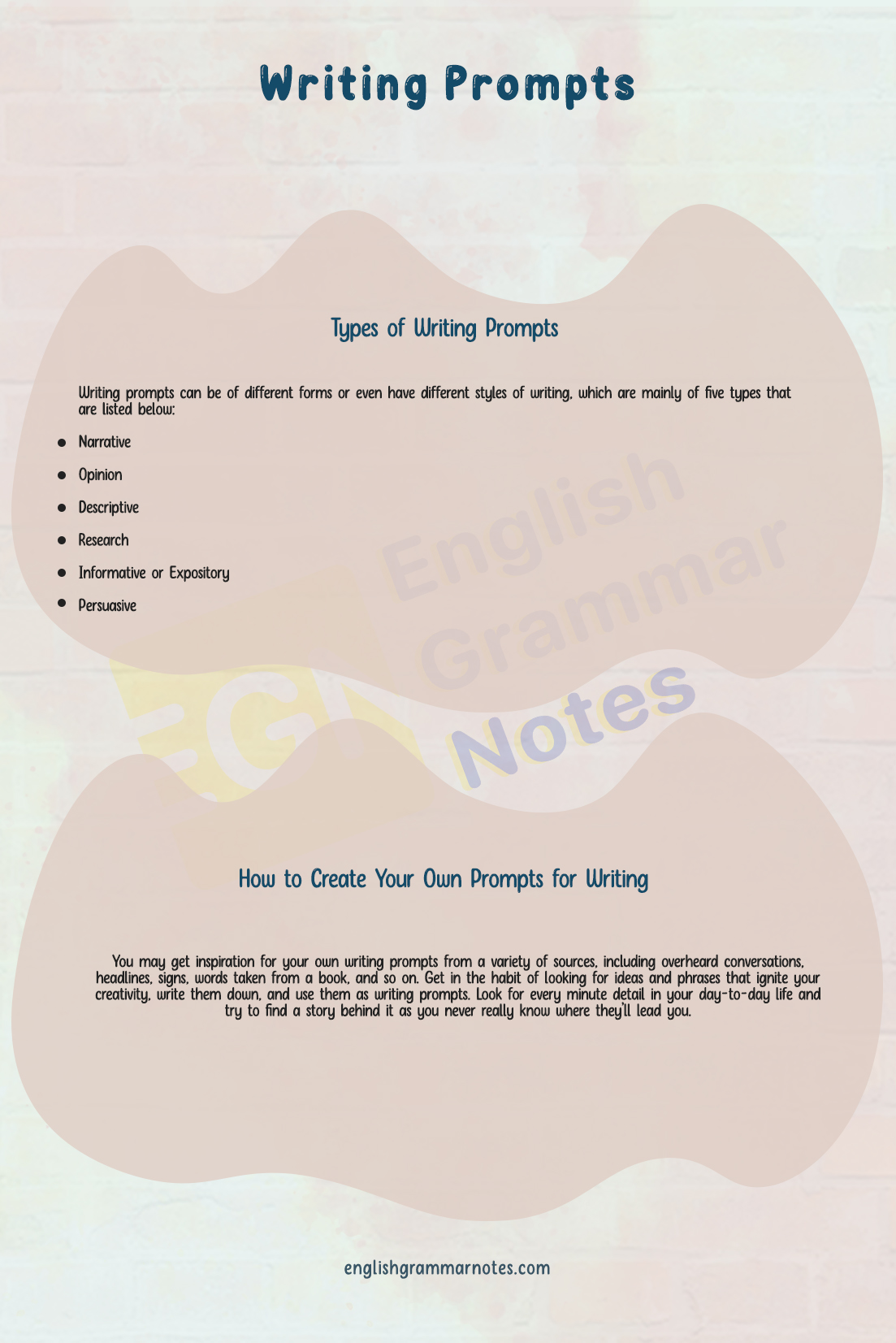
Writing prompts are helpful since we all know how difficult it can be to come up with ideas for what to write about. Writing prompts will broaden your creativity and provide you with some ideas for themes to write about, whether you compose short stories, poetry, or keep a diary.
Leave a Comment Cancel reply
Save my name, email, and website in this browser for the next time I comment.
My creative process and how to define your own [PLUS JOURNAL PROMPTS] Over the Edge Podcast
- Entrepreneurship
Creativity isn’t an outside muse—it’s inside of you, waiting to be tapped. Over the Edge Podcast is a collective survival guide for creatives who want to thrive in an unpredictable industry. OTE publishes new episodes weekly about pushing creative boundaries, making big moves without knowing all the answers and jumping off a cliff to our dreams while figuring out how to build a plane on the way down. Creative work is wild, but we can figure it out. Let’s go over the edge together, friends. Creativity Workshop Info: https://paigeray.com/mastermind-product/p/creativity-workshop-2024 Free posing guide when you sign up for our weekly email series Creative’s Edge: https://paigeray.com/creatives-edge Learn more about Paige on Instagram here: https://www.instagram.com/paigeraycreative/ Visit the Paige Ray Creative website here: https://paigeray.com/
- Episode Website
- More Episodes

IMAGES
VIDEO
COMMENTS
A prompt in writing is a starting point designed to ignite creativity, guiding writers to explore themes, genres, or emotions. It can be a word, question, image, or scenario, aiding in overcoming writer's block. Keep reading to learn everything you need to know about prompts in writing.
A prompt can be a passage of text, a word, or even an image. A writing prompt is a type of assessment or activity that directs individuals to write about a given topic in a certain way. Writing ...
A writing prompt is a brief passage of text (or sometimes an image) that provides a potential topic idea or starting point for an original essay, report, journal entry, story, poem, or other forms of writing. Writing prompts are commonly used in the essay portions of standardized tests, but they may also be devised by the writers themselves.
A writing prompt is a sentence, paragraph, or (rarer) an image that provides inspiration and guidance for creative writing. It may be used as a possible topic or starting point for an original essay, report, journal entry, story, poem, etc. A writing prompt's main aim is to test a writer's analytical capabilities, writing skills, and ...
3. Dialogue Prompts. Sometimes, a single line can unravel a multitude of stories. Consider this: "The last thing I expected to find behind the old bookstore was…". 4. Theme-Based Prompts. Themes add a layer of depth to your writing. Explore themes like resilience, loss, or discovery.
A writing prompt is simply a topic around which you start jotting down ideas. The prompt could be a single word, a short phrase, a complete paragraph or even a picture, with the idea being to give you something to focus upon as you write. You may stick very closely to the original prompt or you may wander off at a tangent.
Writing prompts or timed essays are learning assignments that guide or "prompt" students to write about a specific topic in a specific way. Prompt writing is a long-standing and effective way to teach writing composition because it encourages students to develop their ability to focus on a specific issue, idea, or concept and to offer their ...
By definition, a prompt is a brief text that provides you with a topic around which you can build your ideas. Prompts take many forms: a short phrase, a paragraph, a picture, or even a single word. They can help you develop your original idea or inspire you with a completely new topic. Do not be afraid of challenging yourself and your writing ...
Here are 12 elements that can help make a writing prompt excellent: Specificity - The more detailed and concrete the prompt, the easier it is for writers to sink their teeth into. Avoid vague or generic prompts. Novelty - A fresh, original, or unexpected idea makes for an intriguing prompt that sparks creativity.
Once you have gone through the prompt itself, make a list of questions to discuss with your professor or TA so you can get more clarity on the assignment. University Writing & Speaking Center. 1664 N. Virginia Street, Reno, NV 89557. William N. Pennington Student Achievement Center, Mailstop: 0213. [email protected]. (775) 784-6030.
A writing prompt usually has two main parts. When reading a prompt, look for: The writing situation: In a writing situation, the prompt will present the general topic students are being asked to write about. Directions: Look for expectations of the task you are being asked to meet. This might include what type of essay you're supposed to ...
So you might be asking yourself, "What are writing prompts?". A writing prompt introduces a topic and encourages the student to write in a certain way. It provides an idea or starting point by using words or an image. Writing prompts are also helpful to engage students and help them generate ideas more quickly.
Most prompts are given out by your teacher as part of timed exams or as essay prompts for an assignment. During a timed exam, you will be given a sheet of paper containing a prompt, and must write an essay in response within a certain amount of time. Prompts assigned as take-home or assignment essays should be written and turned in to
A writing prompt is usually a statement followed by questions you can use to craft a piece. The initial statement focuses on a particular subject or an area. For example, a creative writing prompt might suggest, "Describe a cold, empty place." To further focus the writer, the prompt may then pose a series of questions or offer suggestions for ...
The maximum amount of time anyone should spend in this phase is 3 minutes, though depending on the time allotted for the prompt, that could change. The writing process then could begin as normal. The writer could use the most basic of writing applications such as Microsoft Word or opt for an online application such as Google Docs or Memo Notepad.
If you define the goal of your content, it can help you create a more effective prompt. 2. Choose a Type of Prompt. Decide what type of writing prompt you want to create. As mentioned previously, you can choose from single words, phrases, questions, images, scenarios, quotes, or random elements. 3.
Designed to spark imagination and ignite creativity. Whether it's fiction, nonfiction, poetry, or journaling, a writing prompt can open doors to a world of unique ideas and narratives. Embrace open-ended questions, enjoy the fun challenges, and don't fear thinking outside the box. Writing prompts are key to boosting your students' writing skills, enhancing creativity, and empowering them to ...
1. Horror writing prompts. 1) A man inside the coffin breaks the coffin and starts walking. 2) A demonic spirit has entered your friend's body and she is moving closer to attack you. 3) You wake up in an empty house and see a ghost. 4) A doll you brought for a friend suddenly starts speaking.
Analyzing Writing Prompts. Some tests include writing prompts. A prompt tells you what to write about and why you are writing. A prompt might also tell the type of writing to create and who will read it. Before you begin writing your response, you need to analyze the prompt to make sure you understand it. You can use the PAST questions.
prompt: [adjective] being ready and quick to act as occasion demands.
You can find the full prompt from which this example is drawn here . 5. Framing questions. This section is designed to provide students with further guidance. Depending on the type of assignment, you might include either an overview of important sections or framing questions or both. The length of this section will depend on the degree to which ...
A writing prompt helps you focus on the issue you're writing about. It also includes guidelines for completing the writing prompt. Figuring out what type of writing is required is one of the most difficult aspects of writing prompt interpretation. Prompts may indicate the type of writing to be utilised or provide strong suggestions, such as ...
6. Prompts can be visual. Characters and places can be used as prompts (as mentioned in point 2, above). As this might imply, your prompt doesn't need to be a scenario, word or phrase.
My creative process and how to define your own [PLUS JOURNAL PROMPTS] Over the Edge Podcast Entrepreneurship Creativity isn't an outside muse—it's inside of you, waiting to be tapped. Over the Edge Podcast is a collective survival guide for creatives who want to thrive in an unpredictable industry. ...